

What is Experimental Research: Definition, Types & Examples
Understand how experimental research enables researchers to confidently identify causal relationships between variables and validate findings, enhancing credibility.
June 16, 2024

In this Article
Short on time? Get an AI generated summary of this article instead
AI-generated article summary
This blog covers the essentials of experimental research and its application in businesses. It emphasizes the value of controlled and systematic research design for establishing cause-and-effect relationships, managing variables, and generating reliable results. The blog explains the types of experimental research, including pre-experimental, true experimental, and quasi-experimental designs, each with distinct structures that fit different research needs. The importance of experimental research is outlined through examples such as product testing, marketing optimization, pricing strategies, and customer experience enhancement. These examples show how businesses can use experimental research to test hypotheses, improve products, and make informed decisions. Despite its benefits, the blog also highlights the disadvantages, like ethical concerns, artificial settings, high costs, and participant biases. Finally, the blog suggests leveraging tools like Entropik's Decode for AI-driven market research, which allows businesses to experiment and analyze consumer behavior for better decision-making. The post concludes with a brief FAQ section, answering common questions about experimental research, including examples and its application in various fields like medicine, psychology, and education.
Get fast AI summaries of customer calls and feedback with magic summarize in Decode
Experimental research is crucial for companies because it allows them to precisely control and measure key factors, identify dependent and independent elements, and set conditions to observe their effects. By changing one variable systematically, it is possible to determine possible cause-and-effect relations and analyze how specific observed effects depend on them.
Read this blog to learn more about how experimental research design can drive business success and provide practical examples of its application in various industries.
What is Experimental Research?
Experimental research is a systematic and scientific approach in which the researcher manipulates one or more independent variables and observes the effect on a dependent variable while controlling for extraneous variables. This method allows for the establishment of cause-and-effect relationships between variables.
Experimental research involves using control groups, random assignment, and standardized procedures to ensure the reliability and validity of the results. It is commonly used in psychology, medicine, and the social sciences to test hypotheses and theories under controlled conditions.
Example of Experimental Research
An experimental research example scenario can be a clinical trial for a new medication. This scenario aims to determine whether the new type of drug applies to the patient. Accordingly, patients with hypertension diagnosed by a medical practitioner are randomly assigned to two groups.
The experimental group is subjected to the new medication the research treatment facility delivers. In contrast, the control group is treated with either a placebo or the medical drugs previously used by the patients. The data will be both quantitative and qualitative .
Quantitative data will include blood pressure levels or symptom severity scores. Qualitative data will include symptoms reported by the patient or symptoms observed by the practitioner and side effects experienced by the patients. Consequently, the research on which type of drug is effective is tested, and results are obtained by comparing the patient's conditions in the two groups.
Researchers believe a new medication works if the experimental group shows significant symptom improvements compared to a control group and has no immediate side effects. Testing many patients increases confidence that the effects are due to the medication and not a placebo effect.
What Are The Different Types of Experimental Research?
The following are the different types of experimental research: Pre-Experimental Research
- One-Shot Case Study: A single group is exposed to a treatment and then observed for outcomes. There is no control group for comparison.
- One-Group Pretest-Posttest Design: A single group is measured before and after treatment to observe changes.
True Experimental Research
- Randomized Controlled Trials (RCT): Participants are randomly assigned to experimental and control groups to ensure comparability and reduce bias. This design is considered the gold standard in experimental research.
- Pretest-Posttest Control Group Design: Both the experimental and control groups are measured before and after the treatment. The experimental group receives the treatment, while the control group does not.
- Posttest-Only Control Group Design: Participants are randomly assigned to experimental and control groups, but measurements are taken only after the treatment is administered to the experimental group.
Quasi-Experimental Research
- Non-Equivalent Groups Design: Similar to the pretest-posttest control group design, participants are not randomly assigned to groups. This design is often used when random assignment is not feasible.
- Interrupted Time Series Design: Multiple measurements are taken before and after a treatment to observe changes over time. This design helps control time-related variables.
- Matched Groups Design: Participants are matched based on certain characteristics before being assigned to experimental and control groups, ensuring comparable groups.
Factorial Design
- Full Factorial Design: Involves manipulating two or more independent variables simultaneously to observe their interaction effects on the dependent variable. All possible combinations of the independent variables are tested.
- Fractional Factorial Design: A subset of the possible combinations of independent variables is tested, making it more practical when dealing with many variables.
What is the Importance of Experimental Research?

Establishing Causality
Experimental research is essential for establishing correlations between variables of interest and demonstrating causality. It allows researchers to manipulate one or more independent variables considered the cause and record changes in the dependent variable, the effect.
Controlling Variables
One of the strengths of this type of research is that it allows for controlling the effect of extraneous variables. This means that experimental research reduces alternative explanations of effects. Using control groups and random assignment to conditions, the experimental method can accurately determine whether the observed group differences resulted from manipulating the independent variable or other factors.
Providing Reliable and Valid Results
A structured and rigorous methodology while conducting experimental research minimizes the possibility of measurement errors and biases. In addition, randomized controlled trials are generally accepted as the gold standard in research. Because of these features, the data’s reliability can be confirmed in advance by similar findings, and the results will also be more replicable and generalizable to the broader population.
Informing Decision-Making
Experimental research provides empirical evidence and data to support important organizational decisions, such as product testing and experimentation, marketing strategies, or improving operational processes and activities.
Driving Innovation
Experimental research drives innovation by systematically testing new ideas and interventions. It allows companies and researchers to experiment with novel concepts in a controlled environment, identify successful innovations, and confidently scale them up.
What Are The Disadvantages of Experimental Research?
Ethical concerns.
Experimental research implies ethical dilemmas, especially when human subjects are concerned. Generally speaking, ethical principles prohibit manipulating variables, specifically intentionally causing harm to, offending, and inducing psychological or physical pressure. Ethics guidelines and review boards are expected to curb risks in an experiment, but they could also somewhat restrain findings.
Artificial Settings
Most experimental studies are conducted in highly controlled artificial conditions, such as laboratories, where external variables are properly controlled and isolated. Thus, the conclusions of the findings might only sometimes be extended to the real world, so they will only sometimes be applicable. The main type of validity under which this problem falls is external validity. Some variables cannot be controlled or do not appear in artificial conditions.
High Costs and Time Consumption
Experimental research is expensive and time-consuming. There are various reasons for this statement. First, such a type of research requires specialized equipment, controlled conditions of measurement, and large sample sizes, which means increased costs. Second, designing an experiment, preparing all the necessary information and tools for its implementation, running it, and analyzing the data received is usually time-consuming, even in the simplest cases.
Practical and Logistical Constraints
Some variables or phenomena cannot be either manipulated or controlled. Experimental studies are impractical if processes are complex, large-scale, or long-term. For example, a lab cannot treat anything related to the environment or societal changes. Therefore, due to the inability to conduct experiments based on such phenomena, some questions can only be studied by other experimental research methods, such as observational or correlational.
Participant Behavior and Bias
Experimental studies may be biased based on the participants’ awareness of being observed during the process. Also called the Hawthorne effect, another issue that can hurt the study’s validity, especially in medical research, is using control groups. Although they are necessary to measure the efficiency of a certain treatment, such research may involve not providing some groups with potentially beneficial treatment.
These two problems may affect the results and make them unethical. In either case, corrective steps should be taken to address this issue and ensure that the results have been obtained properly.
How Businesses Can Leverage Experimental Research?
Product development and testing.
Businesses can use experimental research to test new products or features before launching them. By creating controlled experiments, such as A/B testing , companies can compare different versions of a product to see which one performs better in terms of customer satisfaction, usability, and sales. This approach allows businesses to refine their products based on empirical evidence, reducing the risk of failure upon release.
Marketing Strategy Optimization
Experimental research is invaluable for optimizing marketing strategies. Businesses can test different marketing messages, channels, and tactics to determine which are most effective in engaging their target audience and driving conversions. For example, they can conduct randomized controlled trials to compare the impact of various advertising campaigns on consumer behavior , enabling data-driven decisions that enhance marketing ROI.
Customer Experience Enhancement
Customer experience is increasingly more critical for retention and loyalty. Companies use experimental research to determine the best practices for customer service, website design, and in-store experience. Through experimenting and measuring responses, companies can identify what promotes satisfaction and loyalty and apply these results to enhance customer experience.
Pricing Strategies
Experimental research helps businesses determine optimal pricing strategies. Companies can analyze consumer reactions and willingness to pay by testing different price points in controlled settings. This approach enables businesses to find the price that maximizes revenue without deterring customers, balancing profitability with market competitiveness.
Operational Efficiency
Businesses can use experimental research to enhance operational efficiency. For instance, they can test various processes, workflows, or technologies to identify which ones improve productivity, reduce costs, or enhance quality. Companies can implement the most effective strategies and practices by systematically experimenting with different operational changes, leading to better overall performance.
Final Words
Experimental research has become a powerful instrument for modern business development. It systematically tests assumptions and variables associated with various activities, from product development, marketing strategies, and customer experiences to pricing and operational efficiencies.

Get your hands on Decode , an AI-powered market research tool that can help you test hypotheses about consumer behavior and preferences. Companies can determine cause-and-effect relationships by manipulating specific variables, such as pricing or advertising methods, and observing the effects on consumer responses using Decode diary studies .
This research method collects qualitative data on user behaviors, activities, and experiences over time. This helps them make informed decisions about product development, marketing strategies, and overall business operations.
Frequently Asked Questions (FAQs)
Question 1: what are examples of experimental research.
Answer: Examples of experimental research include drug trials, psychology experiments, and studies testing new teaching methods. These experiments involve manipulating variables and comparing outcomes to establish causal relationships.
Question 2: What is the meaning of experimental design in research?
Answer: Experimental design in research refers to the methodical planning of experiments to control variables, minimize bias, and draw valid conclusions. It involves carefully considering factors like sample size, randomization, and control groups.
Question 3: What are the characteristics of experimental research?
Answer: Characteristics of experimental research include manipulation of variables, random assignment, control groups, and measurement of outcomes. These features ensure that researchers can isolate the effects of specific variables and draw reliable conclusions.
Question 4: Where is experimental research used?
Answer: Experimental research is used in medicine, psychology, education, and natural sciences to investigate cause-and-effect relationships and validate hypotheses. It provides a systematic approach to testing theories and informing evidence-based practices.
Frequently Asked Questions
Lorem ipsum dolor sit amet, consectetur adipiscing elit. Suspendisse varius enim in eros elementum tristique. Duis cursus, mi quis viverra ornare, eros dolor interdum nulla, ut commodo diam libero vitae erat. Aenean faucibus nibh et justo cursus id rutrum lorem imperdiet. Nunc ut sem vitae risus tristique posuere.
With lots of unique blocks, you can easily build a page without coding.
Click on Study templates
Start from scratch
Add blocks to the content
Saving the Template
Publish the Template
Soham is a true Manchester United fan who finds joy in more than just football. Whether navigating the open road, scoring virtual goals in FIFA, reading novels, or enjoying quality time with friends, Soham embraces a life full of diverse passions.
Product Marketing Specialist
Related Articles

Subjective vs Objective Research: A Competitive Analysis
Explore the differences between subjective and objective research methods, their impact on data analysis, and how to apply each approach effectively.

Predictive Analytics: Harnessing the Power to Foresee the Future
AI-Driven Predictive Analytics: The Key to Forecasting Market Trends, Boosting Efficiency, and Accelerating Business Growth

Mastering the Art of Conceptual Framework in Market Research
Learn how a conceptual framework in market research guides your study, connects theory with practice and ensures a clear structure for effective analysis and results.

The Ultimate User Testing Guide
Explore our guide on user testing, covering its importance, methods, and how to enhance user experience through actionable insights. Read more!

Stratified Random Sampling: A Complete Guide with Definition, Method, and Examples
Master Stratified Random Sampling: A Step-by-Step Guide to Boost Precision in Research and Decision-Making for Researchers and Product Managers

Building Customer Loyalty: Best Practices and Strategies
Customer loyalty is a cornerstone of any successful business. This comprehensive guide will explore various strategies and tactics to help you cultivate a loyal customer base.

How to Create Buyer Personas That Drive Product and Marketing Success?
Develop detailed, data-backed buyer personas to improve product development, refine marketing strategies, and deliver personalized experiences.

What is a Survey? Benefits, Types, Blocks, Use Cases, and More
Discover the power of surveys: types, benefits, use cases, and how to create effective surveys using the AI-powered platform Decode.

Top AI Events You Do Not Want to Miss in 2024
Here are all the top AI events for 2024, curated in one convenient place just for you.

Top Insights Events You Do Not Want to Miss in 2024
Here are all the top Insights events for 2024, curated in one convenient place just for you.

Top CX Events You Do Not Want to Miss in 2024
Here are all the top CX events for 2024, curated in one convenient place just for you.

How to Build an Experience Map: A Complete Guide
An experience map is essential for businesses, as it highlights the customer journey, uncovering insights to improve user experiences and address pain points. Read to find more!

Everything You Need to Know about Intelligent Scoring
Are you curious about Intelligent Scoring and how it differs from regular scoring? Discover its applications and benefits. Read on to learn more!

Qualitative Research Methods and Its Advantages In Modern User Research
Discover how to leverage qualitative research methods, including moderated sessions, to gain deep user insights and enhance your product and UX decisions.

The 10 Best Customer Experience Platforms to Transform Your CX
Explore the top 10 CX platforms to revolutionize customer interactions, enhance satisfaction, and drive business growth.

TAM SAM SOM: What It Means and How to Calculate It?
Understanding TAM, SAM, SOM helps businesses gauge market potential. Learn their definitions and how to calculate them for better business decisions and strategy.

Understanding Likert Scales: Advantages, Limitations, and Questions
Using Likert scales can help you understand how your customers view and rate your product. Here's how you can use them to get the feedback you need.

Mastering the 80/20 Rule to Transform User Research
Find out how the Pareto Principle can optimize your user research processes and lead to more impactful results with the help of AI.

Understanding Consumer Psychology: The Science Behind What Makes Us Buy
Gain a comprehensive understanding of consumer psychology and learn how to apply these insights to inform your research and strategies.

A Guide to Website Footers: Best Design Practices & Examples
Explore the importance of website footers, design best practices, and how to optimize them using UX research for enhanced user engagement and navigation.

Customer Effort Score: Definition, Examples, Tips
A great customer score can lead to dedicated, engaged customers who can end up being loyal advocates of your brand. Here's what you need to know about it.

How to Detect and Address User Pain Points for Better Engagement
Understanding user pain points can help you provide a seamless user experiences that makes your users come back for more. Here's what you need to know about it.

What is Quota Sampling? Definition, Types, Examples, and How to Use It?
Discover Quota Sampling: Learn its process, types, and benefits for accurate consumer insights and informed marketing decisions. Perfect for researchers and brand marketers!

What Is Accessibility Testing? A Comprehensive Guide
Ensure inclusivity and compliance with accessibility standards through thorough testing. Improve user experience and mitigate legal risks. Learn more.

Maximizing Your Research Efficiency with AI Transcriptions
Explore how AI transcription can transform your market research by delivering precise and rapid insights from audio and video recordings.

Understanding the False Consensus Effect: How to Manage it
The false consensus effect can cause incorrect assumptions and ultimately, the wrong conclusions. Here's how you can overcome it.

5 Banking Customer Experience Trends to Watch Out for in 2024
Discover the top 5 banking customer experience trends to watch out for in 2024. Stay ahead in the evolving financial landscape.

The Ultimate Guide to Regression Analysis: Definition, Types, Usage & Advantages
Master Regression Analysis: Learn types, uses & benefits in consumer research for precise insights & strategic decisions.

EyeQuant Alternative
Meet Qatalyst, your best eyequant alternative to improve user experience and an AI-powered solution for all your user research needs.

EyeSee Alternative
Embrace the Insights AI revolution: Meet Decode, your innovative solution for consumer insights, offering a compelling alternative to EyeSee.

Skeuomorphism in UX Design: Is It Dead?
Skeuomorphism in UX design creates intuitive interfaces using familiar real-world visuals to help users easily understand digital products. Do you know how?

Top 6 Wireframe Tools and Ways to Test Your Designs
Wireframe tools assist designers in planning and visualizing the layout of their websites. Look through this list of wireframing tools to find the one that suits you best.

Revolutionizing Customer Interaction: The Power of Conversational AI
Conversational AI enhances customer service across various industries, offering intelligent, context-aware interactions that drive efficiency and satisfaction. Here's how.

User Story Mapping: A Powerful Tool for User-Centered Product Development
Learn about user story mapping and how it can be used for successful product development with this blog.

What is Research Hypothesis: Definition, Types, and How to Develop
Read the blog to learn how a research hypothesis provides a clear and focused direction for a study and helps formulate research questions.

Understanding Customer Retention: How to Keep Your Customers Coming Back
Understanding customer retention is key to building a successful brand that has repeat, loyal customers. Here's what you need to know about it.

Demographic Segmentation: How Brands Can Use it to Improve Marketing Strategies
Read this blog to learn what demographic segmentation means, its importance, and how it can be used by brands.

Mastering Product Positioning: A UX Researcher's Guide
Read this blog to understand why brands should have a well-defined product positioning and how it affects the overall business.

Discrete Vs. Continuous Data: Everything You Need To Know
Explore the differences between discrete and continuous data and their impact on business decisions and customer insights.

50+ Employee Engagement Survey Questions
Understand how an employee engagement survey provides insights into employee satisfaction and motivation, directly impacting productivity and retention.

A Guide to Interaction Design
Interaction design can help you create engaging and intuitive user experiences, improving usability and satisfaction through effective design principles. Here's how.

Exploring the Benefits of Stratified Sampling
Understanding stratified sampling can improve research accuracy by ensuring diverse representation across key subgroups. Here's how.

A Guide to Voice Recognition in Enhancing UX Research
Learn the importance of using voice recognition technology in user research for enhanced user feedback and insights.

The Ultimate Figma Design Handbook: Design Creation and Testing
The Ultimate Figma Design Handbook covers setting up Figma, creating designs, advanced features, prototyping, and testing designs with real users.

The Power of Organization: Mastering Information Architectures
Understanding the art of information architectures can enhance user experiences by organizing and structuring digital content effectively, making information easy to find and navigate. Here's how.

Convenience Sampling: Examples, Benefits, and When To Use It
Read the blog to understand how convenience sampling allows for quick and easy data collection with minimal cost and effort.

What is Critical Thinking, and How Can it be Used in Consumer Research?
Learn how critical thinking enhances consumer research and discover how Decode's AI-driven platform revolutionizes data analysis and insights.

How Business Intelligence Tools Transform User Research & Product Management
This blog explains how Business Intelligence (BI) tools can transform user research and product management by providing data-driven insights for better decision-making.

What is Face Validity? Definition, Guide and Examples
Read this blog to explore face validity, its importance, and the advantages of using it in market research.

What is Customer Lifetime Value, and How To Calculate It?
Read this blog to understand how Customer Lifetime Value (CLV) can help your business optimize marketing efforts, improve customer retention, and increase profitability.

Systematic Sampling: Definition, Examples, and Types
Explore how systematic sampling helps researchers by providing a structured method to select representative samples from larger populations, ensuring efficiency and reducing bias.

Understanding Selection Bias: A Guide
Selection bias can affect the type of respondents you choose for the study and ultimately the quality of responses you receive. Here’s all you need to know about it.

A Guide to Designing an Effective Product Strategy
Read this blog to explore why a well-defined product strategy is required for brands while developing or refining a product.

A Guide to Minimum Viable Product (MVP) in UX: Definition, Strategies, and Examples
Discover what an MVP is, why it's crucial in UX, strategies for creating one, and real-world examples from top companies like Dropbox and Airbnb.

Asking Close Ended Questions: A Guide
Asking the right close ended questions is they key to getting quantitiative data from your users. Her's how you should do it.

Creating Website Mockups: Your Ultimate Guide to Effective Design
Read this blog to learn website mockups- tools, examples and how to create an impactful website design.

Understanding Your Target Market And Its Importance In Consumer Research
Read this blog to learn about the importance of creating products and services to suit the needs of your target audience.

What Is a Go-To-Market Strategy And How to Create One?
Check out this blog to learn how a go-to-market strategy helps businesses enter markets smoothly, attract more customers, and stand out from competitors.

What is Confirmation Bias in Consumer Research?
Learn how confirmation bias affects consumer research, its types, impacts, and practical tips to avoid it for more accurate and reliable insights.

Market Penetration: The Key to Business Success
Understanding market penetration is key to cracking the code to sustained business growth and competitive advantage in any industry. Here's all you need to know about it.

How to Create an Effective User Interface
Having a simple, clear user interface helps your users find what they really want, improving the user experience. Here's how you can achieve it.

Product Differentiation and What It Means for Your Business
Discover how product differentiation helps businesses stand out with unique features, innovative designs, and exceptional customer experiences.

What is Ethnographic Research? Definition, Types & Examples
Read this blog to understand Ethnographic research, its relevance in today’s business landscape and how you can leverage it for your business.

Product Roadmap: The 2024 Guide [with Examples]
Read this blog to understand how a product roadmap can align stakeholders by providing a clear product development and delivery plan.

Product Market Fit: Making Your Products Stand Out in a Crowded Market
Delve into the concept of product-market fit, explore its significance, and equip yourself with practical insights to achieve it effectively.

Consumer Behavior in Online Shopping: A Comprehensive Guide
Ever wondered how online shopping behavior can influence successful business decisions? Read on to learn more.

How to Conduct a First Click Test?
Why are users leaving your site so fast? Learn how First Click Testing can help. Discover quick fixes for frustration and boost engagement.

What is Market Intelligence? Methods, Types, and Examples
Read the blog to understand how marketing intelligence helps you understand consumer behavior and market trends to inform strategic decision-making.

What is a Longitudinal Study? Definition, Types, and Examples
Is your long-term research strategy unclear? Learn how longitudinal studies decode complexity. Read on for insights.

What Is the Impact of Customer Churn on Your Business?
Understanding and reducing customer churn is the key to building a healthy business that keeps customers satisfied. Here's all you need to know about it.

The Ultimate Design Thinking Guide
Discover the power of design thinking in UX design for your business. Learn the process and key principles in our comprehensive guide.

100+ Yes Or No Survey Questions Examples
Yes or no survey questions simplify responses, aiding efficiency, clarity, standardization, quantifiability, and binary decision-making. Read some examples!

What is Customer Segmentation? The ULTIMATE Guide
Explore how customer segmentation targets diverse consumer groups by tailoring products, marketing, and experiences to their preferred needs.

Crafting User-Centric Websites Through Responsive Web Design
Find yourself reaching for your phone instead of a laptop for regular web browsing? Read on to find out what that means & how you can leverage it for business.

How Does Product Placement Work? Examples and Benefits
Read the blog to understand how product placement helps advertisers seek subtle and integrated ways to promote their products within entertainment content.

The Importance of Reputation Management, and How it Can Make or Break Your Brand
A good reputation management strategy is crucial for any brand that wants to keep its customers loyal. Here's how brands can focus on it.

A Comprehensive Guide to Human-Centered Design
Are you putting the human element at the center of your design process? Read this blog to understand why brands must do so.

How to Leverage Customer Insights to Grow Your Business
Genuine insights are becoming increasingly difficult to collect. Read on to understand the challenges and what the future holds for customer insights.

The Complete Guide to Behavioral Segmentation
Struggling to reach your target audience effectively? Discover how behavioral segmentation can transform your marketing approach. Read more in our blog!

Creating a Unique Brand Identity: How to Make Your Brand Stand Out
Creating a great brand identity goes beyond creating a memorable logo - it's all about creating a consistent and unique brand experience for your cosnumers. Here's everything you need to know about building one.

Understanding the Product Life Cycle: A Comprehensive Guide
Understanding the product life cycle, or the stages a product goes through from its launch to its sunset can help you understand how to market it at every stage to create the most optimal marketing strategies.

Empathy vs. Sympathy in UX Research
Are you conducting UX research and seeking guidance on conducting user interviews with empathy or sympathy? Keep reading to discover the best approach.

What is Exploratory Research, and How To Conduct It?
Read this blog to understand how exploratory research can help you uncover new insights, patterns, and hypotheses in a subject area.

First Impressions & Why They Matter in User Research
Ever wonder if first impressions matter in user research? The answer might surprise you. Read on to learn more!
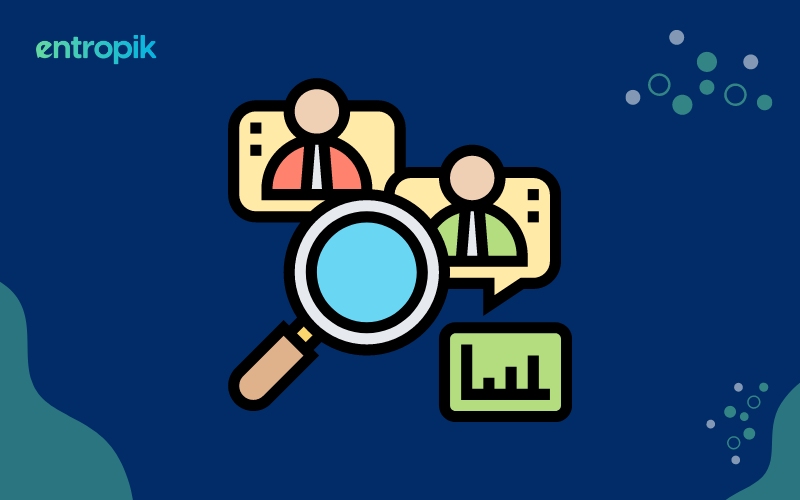
Cluster Sampling: Definition, Types & Examples
Read this blog to understand how cluster sampling tackles the challenge of efficiently collecting data from large, spread-out populations.

Top Six Market Research Trends
Curious about where market research is headed? Read on to learn about the changes surrounding this field in 2024 and beyond.
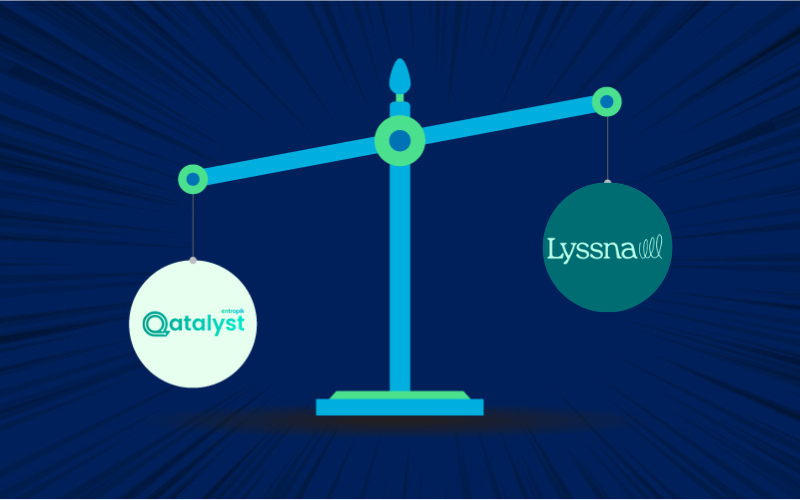
Lyssna Alternative
Meet Qatalyst, your best lyssna alternative to usability testing, to create a solution for all your user research needs.
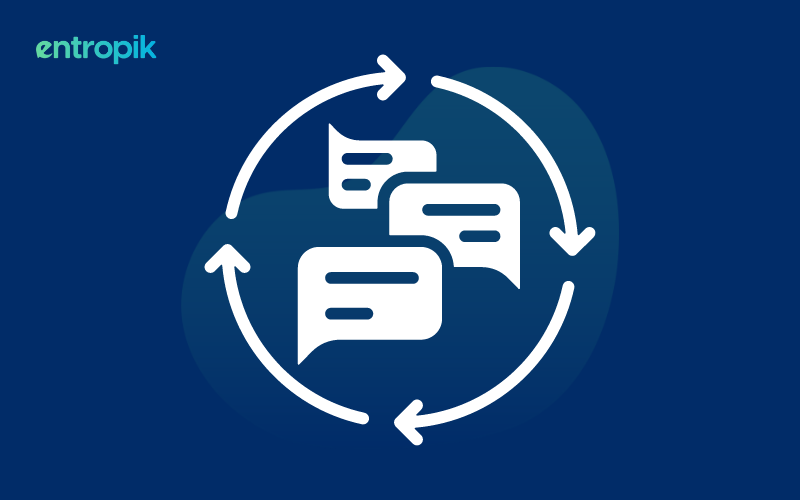
What is Feedback Loop? Definition, Importance, Types, and Best Practices
Struggling to connect with your customers? Read the blog to learn how feedback loops can solve your problem!

UI vs. UX Design: What’s The Difference?
Learn how UI solves the problem of creating an intuitive and visually appealing interface and how UX addresses broader issues related to user satisfaction and overall experience with the product or service.
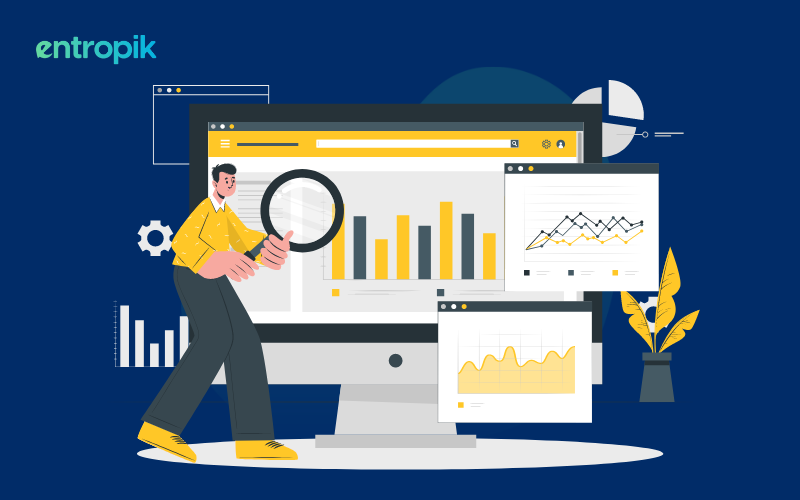
The Impact of Conversion Rate Optimization on Your Business
Understanding conversion rate optimization can help you boost your online business. Read more to learn all about it.

Insurance Questionnaire: Tips, Questions and Significance
Leverage this pre-built customizable questionnaire template for insurance to get deep insights from your audience.

UX Research Plan Template
Read on to understand why you need a UX Research Plan and how you can use a fully customizable template to get deep insights from your users!

Brand Experience: What it Means & Why It Matters
Have you ever wondered how users navigate the travel industry for your research insights? Read on to understand user experience in the travel sector.


Validity in Research: Definitions, Types, Significance, and Its Relationship with Reliability
Is validity ensured in your research process? Read more to explore the importance and types of validity in research.
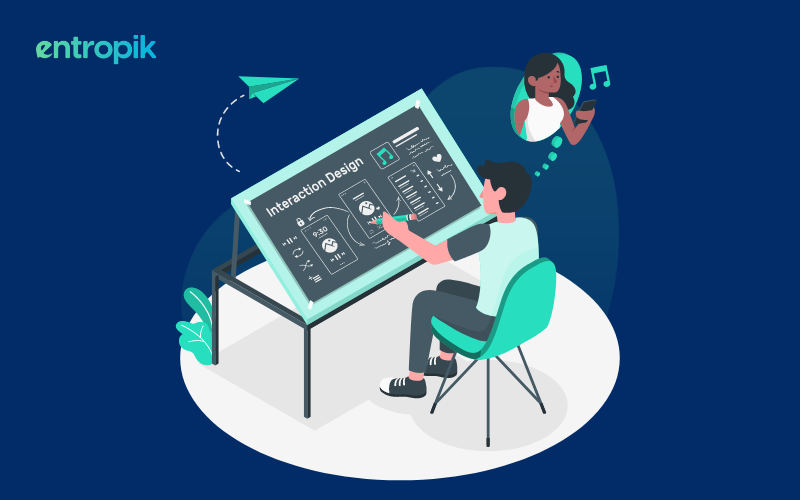
The Role of UI Designers in Creating Delightful User Interfaces
UI designers help to create aesthetic and functional experiences for users. Here's all you need to know about them.
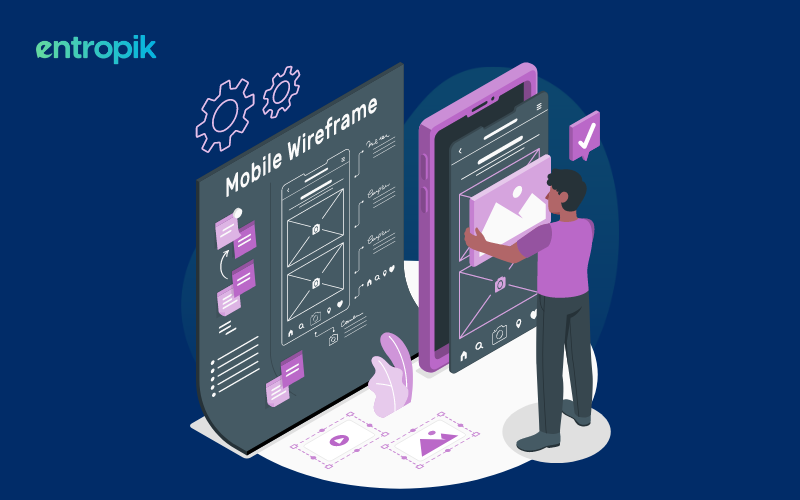
Top Usability Testing Tools to Try
Using usability testing tools can help you understand user preferences and behaviors and ultimately, build a better digital product. Here are the top tools you should be aware of.

Understanding User Experience in Travel Market Research
Ever wondered how users navigate the travel industry for your research insights? Read on to understand user experience in the travel sector.

Top 10 Customer Feedback Tools You’d Want to Try
Explore the top 10 customer feedback tools for analyzing feedback, empowering businesses to enhance customer experience.

10 Best UX Communities on LinkedIn & Slack for Networking & Collaboration
Discover the significance of online communities in UX, the benefits of joining communities on LinkedIn and Slack, and insights into UX career advancement.
Maximize Your Research Potential
Experience why teams worldwide trust our Consumer & User Research solutions.
Book a Demo


- Pollfish School
- Market Research
- Survey Guides
- Get started
- What is Experimental Research & How is it Significant for Your Business
What is Experimental Research & How is it Significant for Your Business
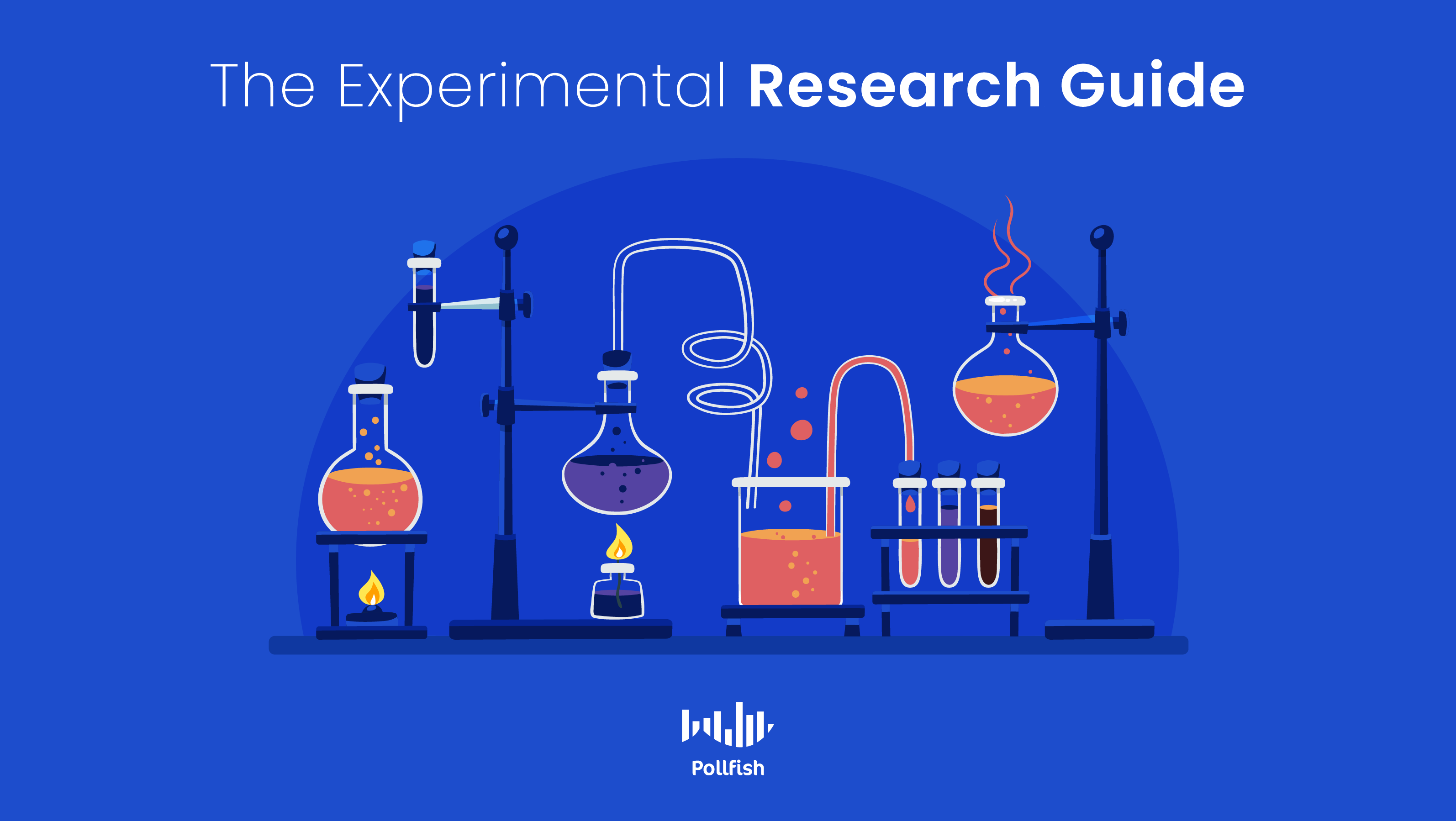
Experimental research uses a scientific method for conducting research, employing the most methodical research design. Known as the gold standard, it involves performing experiments to reach conclusions and can be conducted based on some of the findings from previous forms of research.
Logically, it would follow correlational research, which studies the relationships between variables. It can also follow causal research , a kind of experimental research in itself, as it establishes cause and effect relationships between previously studied variables.
Experimental research is typically used in psychology, physical and social sciences, along with education. However, it too can be applied to business.
This article expounds on experimental research, how it is conducted, how it differs from other forms of research, its key aspects and how survey studies can complement it.
Defining Experimental Research
Experimental research is a kind of study that rigidly follows a scientific research design. It involves testing or attempting to prove a hypothesis by way of experimentation . As such, it uses one or more independent variables, manipulating them and then using them on one or more dependent variables .
In this process, the researchers can measure the effect of the independent variable(s) on the dependent variable(s). This kind of study is performed over some time, so that researchers can form a corroborated conclusion about the two variables.
The experimental research design must be carried out in a controlled environment .
Throughout the experiment, the researcher collects data that can support or refute a hypothesis, thus, this research is also referred to as hypothesis testing or a deductive research method.
The Key Aspects of Experimental Research
There are various attributes that are formative of and unique to experimental research in addition to its main purpose. Understanding these is key to understanding this kind of research in-depth and what to expect when performing it.
The following enumerates the defining characteristics of this kind of research:
- It includes a hypothesis, a variable that will be manipulated by the researcher along with the variable that will be measured and compared .
- The data in this research must be able to be quantified.
- The observation of the subjects, however, must be executed qualitatively.
- The latter is rarer, as it is difficult to manipulate treatments and to control external occurrences in a live setting.
- It relies on making comparisons between two or more groups (the variables).
- Some variables are given an experimental stimulus called a treatment; this is the treatment group.
- The variables that do not receive a stimulus are known as the control group.
- First, researchers must consider how the variables are related and only afterward can they move on to making predictions that can be tested.
- Time is a crucial component when putting forth a cause-and-effect relationship.
- Pre-experimental research design
- True experimental research design
- Quasi-experimental research design
The Three Types of Experimental Research
Experimental research encompasses three subtypes that researchers can implement. They all fall under experimental research, differing in how the subjects are classified. They can be classified based on their conditions or groups.
Pre-experimental research design:
This entails a group or several groups to be observed after factors of cause and effect are implemented.
- Researchers implement this research design when they need to learn whether further investigation is required for these particular groups.
- One-shot Case Study Research Design
- One-group Pretest-posttest Research Design
- Static-group Comparison
Quasi-experimental Research Design
Representing half or pseudo, the moniker “quasi” is used to allude to resembling true experimental research, but not entirely.
- The participants are not randomly assigned, rather they are used when randomization is impossible or impractical.
- Quasi-experimental research is typically used in the education field.
- Examples include: the time series, no equivalent control group design, and the counterbalanced design.
True Experimental Research Design
This kind of experimental research design studies statistical analysis to confirm or debunk a hypothesis.
- It is regarded as the most accurate form of research.
- True experimental research can produce a cause-effect relationship within a group.
- A control group (unaltered) and an experimental group (to undergo changes in variables)
- Random distribution
- Variables can be manipulated
Why Your Business Needs Experimental Research
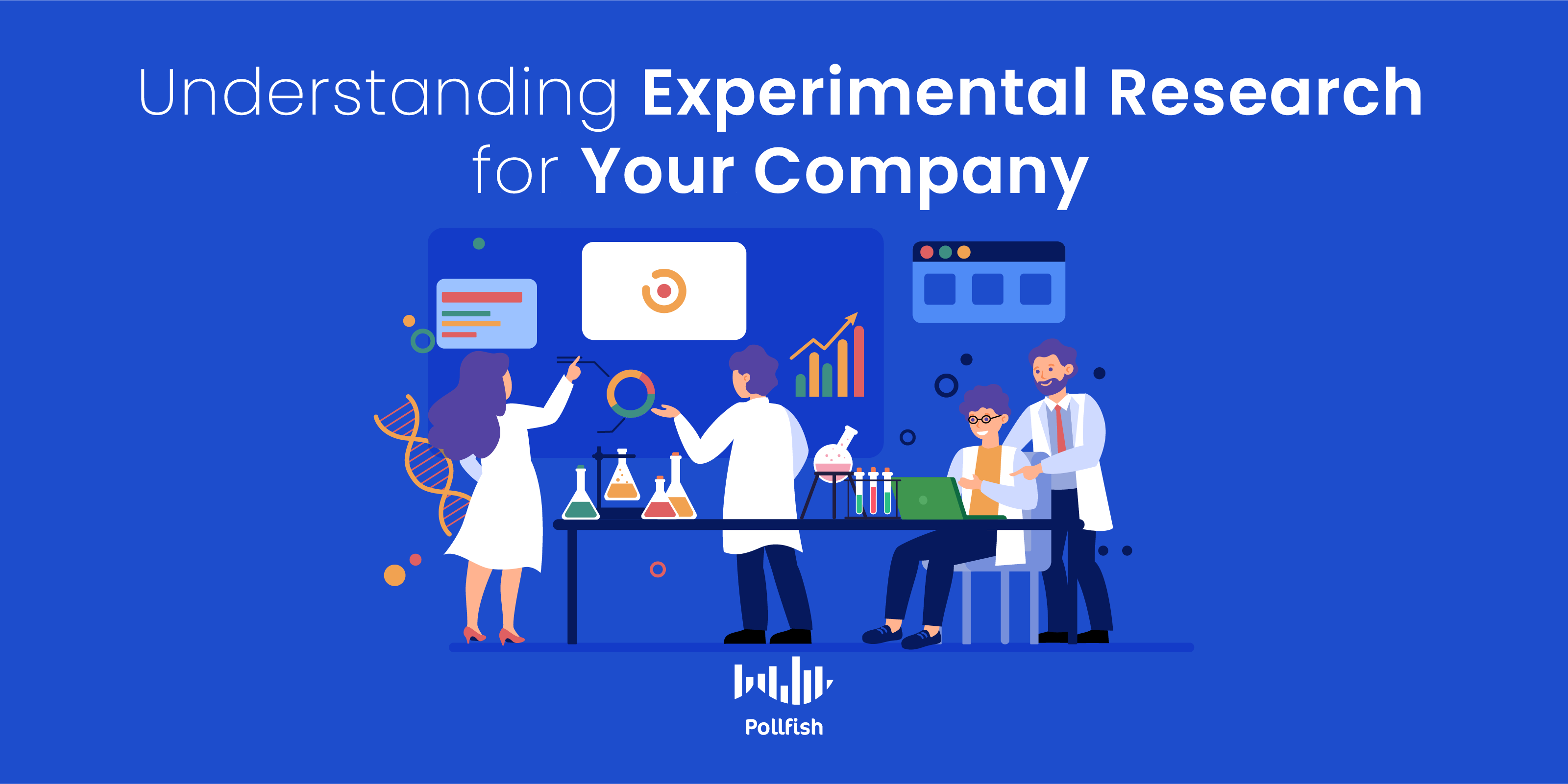
There are various benefits to conducting experimental research for businesses. Firstly, this form of research can help businesses test a new strategy before fully engaging in/ launching it.
The strategy can involve anything from content marketing strategy, to a new product launch. This is especially useful for technology companies, which conduct experimentation frequently. In fact, this kind of research is essential to an R & D (research and development) department.
This makes experimental research a much-needed effort when it comes to spurring innovation. Whether it involves a slight rebranding or an upgrade of products, experimental research guides these campaigns in a science-backed manner.
Secondly, a business must excel in meeting customer needs. Customer experience is an overwhelmingly important side of any business, as customers are willing to make on-the-stop purchases and pay more for a good CX .
As such, each product addition and change in a customer journey must be carried out wisely. Businesses ought to avoid creating unwanted services, or those that cause any aversion within customers. Instead, they should only invest in the most profitable services, products and experiences, a feat that cannot be accomplished solely on guesswork.
Experimenting allows brands to understand customer preferences and changes in their behaviors , as the experiments create stimuli and changes in independent variables.
Additionally, experimental research grants companions an understanding of their business environment. In turn, this helps them predict outcomes, or create hypotheses about outcomes to guide them in further research, if need be. For example, a business may consider testing the reactions of its competitors should it raise its costs on various offers.
Aside from discovering if this yields a profitable change, it can discover how companies in the same niche respond and if those responses drive more sales, etc.
Key Independent Variables
- Digital user experience (DX) such as new site features
- Advertisements
- Marketing activity (SEO, SEM, social media announcements, retargeting, etc.)
- Inventory (new products or upgrades)
- Interactions with sales agents
Key Dependent variables
- VoC feedback (whether positive or negative)
- Site traffic
- In-store visits
- Time spent on a website, bounce rates, etc.
An Example of Experimental Research for Business
Market researchers can apply experimental research to a wide breadth of testing needs. Virtually anything that requires proof, confirmation, or is clouded by uncertainty can put experimentation into practice.
The following is an example of how a business can use this research:
A product manager needs to convince the higher-ups in a denim company to launch a new product line at a particular department store. The objective of this launch is to increase sales, expand the company’s floor presence and widen the offerings.
The manager has to prove that this line is needed in order for the company to pitch the idea to the department store. The product manager can then conduct experimental research to provide a strong case for their theory, that a new line can raise sales.
The product manager performs experimental research by executing a test in a few stores, in which the new line of denim is sold. These stores are varied in location to signify the target market sales before and after the launch. The test runs for a month to determine if the hypothesis (the new line resulting in increased attention and sales) can be proven.
This represents a field experiment. The product manager must heed the sales and foot traffic of the new product line, paying attention to spikes in revenue and overall sales to justify the new line.
Experimental Research Survey Examples
Survey research runs contrary to experimental research, unlike the other main forms of research such as exploratory, descriptive and correlational research. This is because the nature of surveys is observational, while experimental research, as its name signifies, relies on experimentations, that is testing out changes and studying the reactions to the changes.
Despite the contrast of survey research to experimental research, they are not completely at odds. In fact, surveys are a potent method to gain further insight into an existing experiment or understand variables before conducting an experiment in the first place.
As such, businesses can adopt a wide variety of surveys to complement their experimental research. Here are some of the key forms of surveys that work in tandem with experimentation:
- Discovers the aspects of statistical significance within variables.
- Helpful in that causal research is quantitative in essence.
- Delves into past events, occurrences and attitudes in regards to the variables.
- Shows whether the variables changed and how so.
- Can find causative elements between variables over a period of time.
- Useful for formulating hypotheses.
- Helps businesses zero in on variables that contribute to or result from certain kinds of customer experiences.
- Allows businesses to test CX in relation to the responses from this survey.
- Measures various matters critical in a business or organization; surveys employees.
- Deployed more frequently, so variables can always be continually tracked.
- Helps answer the what, why and how with open-ended questions.
- Extracts key high-level information in depth.
How Experimental Research Differs from Correlational, Exploratory, Descriptive and Causal Research
Experimental research differs from exploratory, descriptive and correlational research in self-evident ways. It is, however, often conflated with causal research. However, they too have notable differences.
Causal research involves finding the cause-and-effect relationships between variables. Thus, it too employs experimentation. However, this means that causal research is a form of experimental research, not the other way around.
Experimental research, on the other hand, is fully science and experiment-based, as it chiefly seeks to prove or disprove a hypothesis. While this largely involves studying independent and dependent variables, as it does in causal research, it is not solely based on these aspects. Instead, it can introduce a new variable without knowing the dependent variable or experiment on an entirely new idea (as in the example used in the previous selection).
Causal research looks into the comparison of variable relationships to find a cause and effect, while experimental research states an expected relationship between variables and is bent on testing a hypothesis.
As far as comparisons to correlational research go, while experimental research also studies the relationships between variables, it functions far beyond this by manipulating the variables and virtually all subjects involved in experiments .
On the contrary, correlational research does not apply any alterations or conditioning to variables. Instead, it is a purely observational research method. As such, it merely detects whether there is a correlation between only 2 variables. In contrast, experimental research studies and experiments with several at a time.
Exploratory research is vastly different from experimental research, as it forms the very foundation of a research problem and establishes a hypothesis for further research. As such, it is conducted as the very first kind of research around a new topic and does not fixate on variables.
Descriptive research , like exploratory research and unlike experimental research, is conducted early in the full research process, following exploratory research. Like exploratory research, it seeks to paint a picture of a problem or phenomenon , as it zeros in an already-established issue and delves further, in pursuit of all the details and conditions surrounding it.
Thus, unlike experimental research, it only observes; it does not manipulate variables in any capacity or setting.
The Advantages and Disadvantages of Experimental Research
Experimental research offers several benefits for researchers and businesses. However, as with all other research methods, it too carries a few disadvantages that researchers should be aware of.
The Advantages
- Researchers have a full level of control in an experiment.
- It can be used in a wide variety of fields and verticals.
- The results are specific and conclusive.
- The results allow researchers to apply their findings to similar phenomena or contexts.
- It can determine the validity of a hypothesis, or disprove one.
- Researchers can manipulate variables and use them in as many variations as they desire without tarnishing the validity of the research.
- It discovers the cause and effect among variables.
- Researchers can further analyze relationships through testing.
- It helps researchers understand a specific environment fully.
- The studies can be replicated so that the researchers can repeat their experiments to test other variables or confirm the results again.
The Disadvantages
- It involves a lot of resources, time and money, as such, it is not easy to conduct.
- It can form artificial environments when researchers unwittingly over-manipulate variables as a means of duplicating real-world instances.
- It is vulnerable to flaws in the methodology, along with other mistakes that can’t always be predicted.
- Flawed experiments may require researchers to start their experiments anew to avoid false calculations, measuring results from artificial scenarios or other mistakes.
- Some variables cannot be manipulated and some forms of research experiments are too impractical to conduct.
How to Conduct Experimental Research
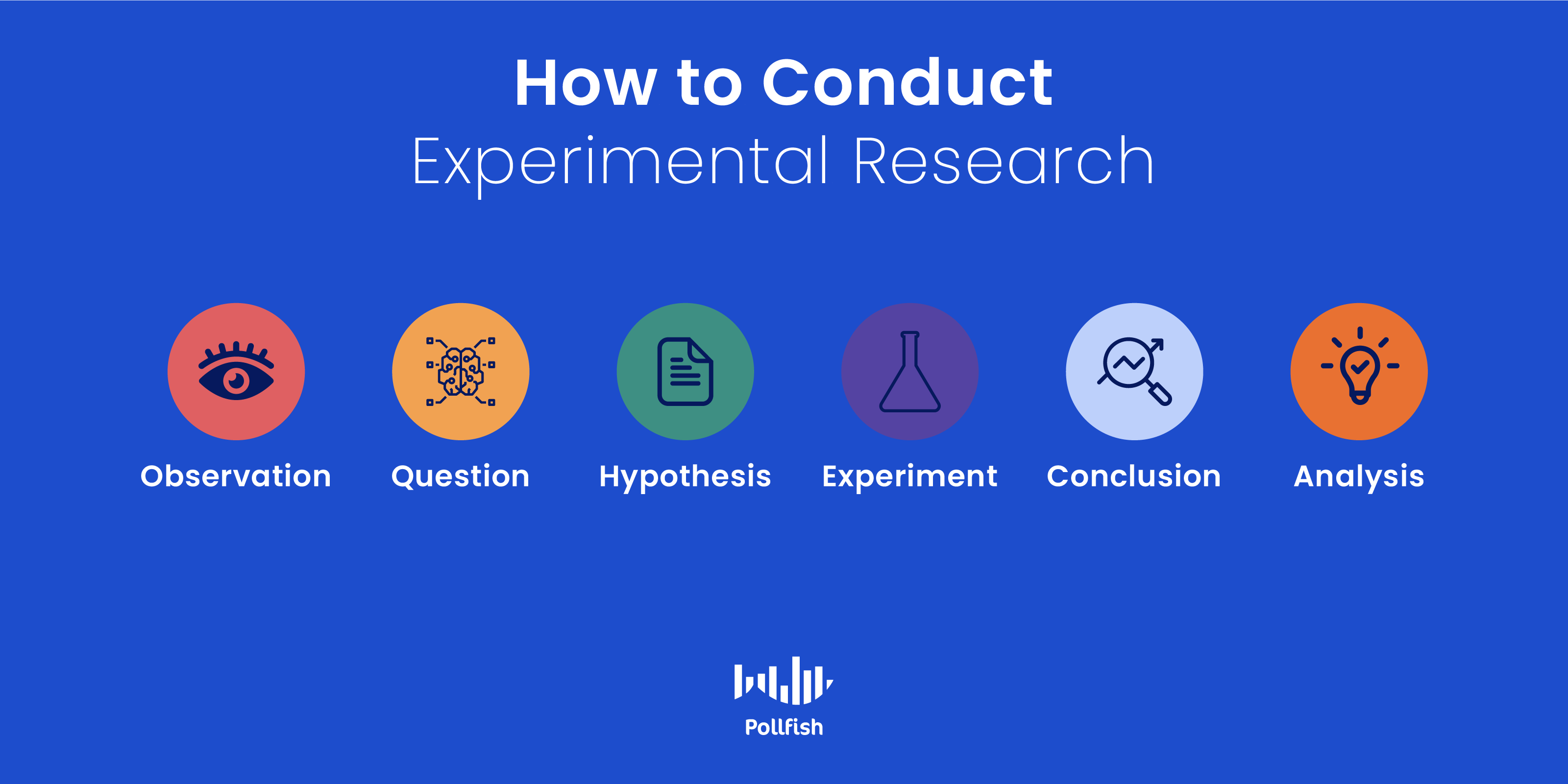
Experimental research is often the final form of research conducted in the research process and is considered conclusive research. The following explains the general steps required to successfully complete experimental research.
- Form a specific research question.
- Gather all available literature and other resources around the subject.
- Conduct secondary research around the subject and primary research via surveys .
- Consider how they relate to your question and how they line up with the secondary research you conducted.
- After your initial studies, form a hypothesis.
- First, decide which variable(s) is dependent/ independent (if it doesn’t involve experimenting).
- Decide how far to vary the independent variable.
- In the experiment, manipulate the independent variable(s).
- Measure the dependent variable(s) while you study the independent variable(s) alongside.
- Make sure to control potential confounding variables.
- Keep the study size in mind; a larger study pool creates statistical findings.
- Assign your subjects to “treatment” groups randomly, with each to receive a different level of “treatment.”
- Use a control group, which receives no manipulation. This shows you the test subjects as they appear/behave without any experimental intervention.
- Completely randomized design: every subject gets randomly assigned to a treatment.
- Randomized block design : aka stratified random design, subjects get first grouped based on a shared characteristic, then assigned to treatments within their groups at random.
- Independent measure : subjects receive only one of the possible levels of an experimental treatment.
- Repeated measures design : every subject gets each of the experimental treatments consecutively, as their responses are measured. It also refers to measuring the effect of an emerging effect over time.
- Continue experimenting on variables as needed, take measurements and take notes.
- Based on your experiment(s), put together a logical conclusion. It is possible that it may need testing over time.
Using Experimental Research and Going Further
Although experimental research can be very complex, this research method is the most conclusive. Using a scientific approach, it can help you form tests on various business matters. While it is critical for understanding your target market’s and customers’ existing behaviors, it can also be used to experiment on a wide variety of other matters.
Before launching a new product, or an updated one, for example, you can conduct an experiment to understand the product in action. This helps you avoid any glitches or undesirable qualities that will incur problems for your customs and a bad reputation for your brand.
Experimental research is not for every business, yet if you decide to implement this form of research, consider using surveys in tandem. An online survey platform can help you establish and distribute your surveys to a wide network via organic sampling to avoid biases.
Although it isn’t a requirement, in today’s age of excelling in customer experience (CX), it is of the essence to have as much data on your target market as possible. An online survey tool makes this possible.
Do you want to distribute your survey? Pollfish offers you access to millions of targeted consumers to get survey responses from $0.95 per complete. Launch your survey today.
Privacy Preference Center
Privacy preferences.
- Skip to main content
- Skip to primary sidebar
- Skip to footer
- QuestionPro

- Solutions Industries Gaming Automotive Sports and events Education Government Travel & Hospitality Financial Services Healthcare Cannabis Technology Use Case AskWhy Communities Audience Contactless surveys Mobile LivePolls Member Experience GDPR Positive People Science 360 Feedback Surveys
- Resources Blog eBooks Survey Templates Case Studies Training Help center
Home Market Research
Experimental Research: What it is + Types of designs
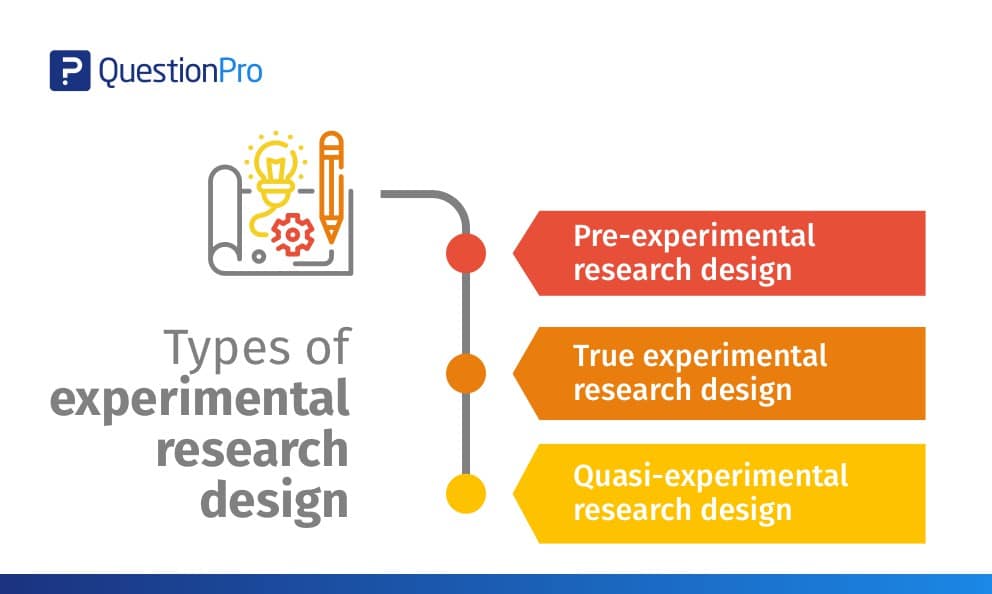
Any research conducted under scientifically acceptable conditions uses experimental methods. The success of experimental studies hinges on researchers confirming the change of a variable is based solely on the manipulation of the constant variable. The research should establish a notable cause and effect.
What is Experimental Research?
Experimental research is a study conducted with a scientific approach using two sets of variables. The first set acts as a constant, which you use to measure the differences of the second set. Quantitative research methods , for example, are experimental.
If you don’t have enough data to support your decisions, you must first determine the facts. This research gathers the data necessary to help you make better decisions.
You can conduct experimental research in the following situations:
- Time is a vital factor in establishing a relationship between cause and effect.
- Invariable behavior between cause and effect.
- You wish to understand the importance of cause and effect.
Experimental Research Design Types
The classic experimental design definition is: “The methods used to collect data in experimental studies.”
There are three primary types of experimental design:
- Pre-experimental research design
- True experimental research design
- Quasi-experimental research design
The way you classify research subjects based on conditions or groups determines the type of research design you should use.
0 1. Pre-Experimental Design
A group, or various groups, are kept under observation after implementing cause and effect factors. You’ll conduct this research to understand whether further investigation is necessary for these particular groups.
You can break down pre-experimental research further into three types:
- One-shot Case Study Research Design
- One-group Pretest-posttest Research Design
- Static-group Comparison
0 2. True Experimental Design
It relies on statistical analysis to prove or disprove a hypothesis, making it the most accurate form of research. Of the types of experimental design, only true design can establish a cause-effect relationship within a group. In a true experiment, three factors need to be satisfied:
- There is a Control Group, which won’t be subject to changes, and an Experimental Group, which will experience the changed variables.
- A variable that can be manipulated by the researcher
- Random distribution
This experimental research method commonly occurs in the physical sciences.
0 3. Quasi-Experimental Design
The word “Quasi” indicates similarity. A quasi-experimental design is similar to an experimental one, but it is not the same. The difference between the two is the assignment of a control group. In this research, an independent variable is manipulated, but the participants of a group are not randomly assigned. Quasi-research is used in field settings where random assignment is either irrelevant or not required.
Importance of Experimental Design
Experimental research is a powerful tool for understanding cause-and-effect relationships. It allows us to manipulate variables and observe the effects, which is crucial for understanding how different factors influence the outcome of a study.
But the importance of experimental research goes beyond that. It’s a critical method for many scientific and academic studies. It allows us to test theories, develop new products, and make groundbreaking discoveries.
For example, this research is essential for developing new drugs and medical treatments. Researchers can understand how a new drug works by manipulating dosage and administration variables and identifying potential side effects.
Similarly, experimental research is used in the field of psychology to test theories and understand human behavior. By manipulating variables such as stimuli, researchers can gain insights into how the brain works and identify new treatment options for mental health disorders.
It is also widely used in the field of education. It allows educators to test new teaching methods and identify what works best. By manipulating variables such as class size, teaching style, and curriculum, researchers can understand how students learn and identify new ways to improve educational outcomes.
In addition, experimental research is a powerful tool for businesses and organizations. By manipulating variables such as marketing strategies, product design, and customer service, companies can understand what works best and identify new opportunities for growth.
Advantages of Experimental Research
When talking about this research, we can think of human life. Babies do their own rudimentary experiments (such as putting objects in their mouths) to learn about the world around them, while older children and teens do experiments at school to learn more about science.
Ancient scientists used this research to prove that their hypotheses were correct. For example, Galileo Galilei and Antoine Lavoisier conducted various experiments to discover key concepts in physics and chemistry. The same is true of modern experts, who use this scientific method to see if new drugs are effective, discover treatments for diseases, and create new electronic devices (among others).
It’s vital to test new ideas or theories. Why put time, effort, and funding into something that may not work?
This research allows you to test your idea in a controlled environment before marketing. It also provides the best method to test your theory thanks to the following advantages:
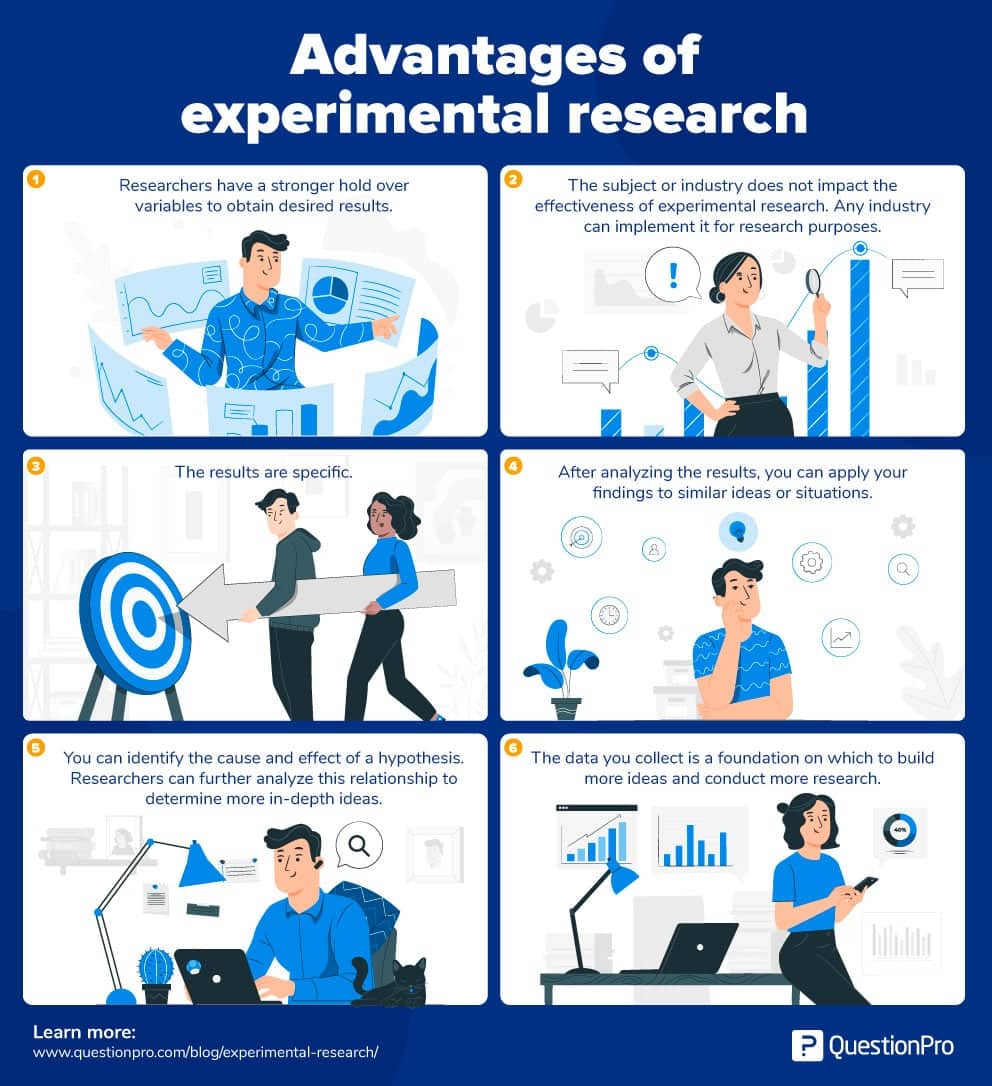
- Researchers have a stronger hold over variables to obtain desired results.
- The subject or industry does not impact the effectiveness of experimental research. Any industry can implement it for research purposes.
- The results are specific.
- After analyzing the results, you can apply your findings to similar ideas or situations.
- You can identify the cause and effect of a hypothesis. Researchers can further analyze this relationship to determine more in-depth ideas.
- Experimental research makes an ideal starting point. The data you collect is a foundation for building more ideas and conducting more action research .
Whether you want to know how the public will react to a new product or if a certain food increases the chance of disease, experimental research is the best place to start. Begin your research by finding subjects using QuestionPro Audience and other tools today.
LEARN MORE FREE TRIAL
MORE LIKE THIS

Total Experience in Trinidad & Tobago — Tuesday CX Thoughts
Oct 29, 2024

You Can’t Please Everyone — Tuesday CX Thoughts
Oct 22, 2024

Edit survey: A new way of survey building and collaboration
Oct 10, 2024

Pulse Surveys vs Annual Employee Surveys: Which to Use
Oct 4, 2024
Other categories
- Academic Research
- Artificial Intelligence
- Assessments
- Brand Awareness
- Case Studies
- Communities
- Consumer Insights
- Customer effort score
- Customer Engagement
- Customer Experience
- Customer Loyalty
- Customer Research
- Customer Satisfaction
- Employee Benefits
- Employee Engagement
- Employee Retention
- Friday Five
- General Data Protection Regulation
- Insights Hub
- Life@QuestionPro
- Market Research
- Mobile diaries
- Mobile Surveys
- New Features
- Online Communities
- Question Types
- Questionnaire
- QuestionPro Products
- Release Notes
- Research Tools and Apps
- Revenue at Risk
- Survey Templates
- Training Tips
- Tuesday CX Thoughts (TCXT)
- Uncategorized
- What’s Coming Up
- Workforce Intelligence
Experimental Research: Definition, Types, Design, Examples
Appinio Research · 14.05.2024 · 32min read

Experimental research is a cornerstone of scientific inquiry, providing a systematic approach to understanding cause-and-effect relationships and advancing knowledge in various fields. At its core, experimental research involves manipulating variables, observing outcomes, and drawing conclusions based on empirical evidence. By controlling factors that could influence the outcome, researchers can isolate the effects of specific variables and make reliable inferences about their impact. This guide offers a step-by-step exploration of experimental research, covering key elements such as research design, data collection, analysis, and ethical considerations. Whether you're a novice researcher seeking to understand the basics or an experienced scientist looking to refine your experimental techniques, this guide will equip you with the knowledge and tools needed to conduct rigorous and insightful research.
What is Experimental Research?
Experimental research is a systematic approach to scientific inquiry that aims to investigate cause-and-effect relationships by manipulating independent variables and observing their effects on dependent variables. Experimental research primarily aims to test hypotheses, make predictions, and draw conclusions based on empirical evidence.
By controlling extraneous variables and randomizing participant assignment, researchers can isolate the effects of specific variables and establish causal relationships. Experimental research is characterized by its rigorous methodology, emphasis on objectivity, and reliance on empirical data to support conclusions.
Importance of Experimental Research
- Establishing Cause-and-Effect Relationships : Experimental research allows researchers to establish causal relationships between variables by systematically manipulating independent variables and observing their effects on dependent variables. This provides valuable insights into the underlying mechanisms driving phenomena and informs theory development.
- Testing Hypotheses and Making Predictions : Experimental research provides a structured framework for testing hypotheses and predicting the relationship between variables . By systematically manipulating variables and controlling for confounding factors, researchers can empirically test the validity of their hypotheses and refine theoretical models.
- Informing Evidence-Based Practice : Experimental research generates empirical evidence that informs evidence-based practice in various fields, including healthcare, education, and business. Experimental research contributes to improving outcomes and informing decision-making in real-world settings by identifying effective interventions, treatments, and strategies.
- Driving Innovation and Advancement : Experimental research drives innovation and advancement by uncovering new insights, challenging existing assumptions, and pushing the boundaries of knowledge. Through rigorous experimentation and empirical validation, researchers can develop novel solutions to complex problems and contribute to the advancement of science and technology.
- Enhancing Research Rigor and Validity : Experimental research upholds high research rigor and validity standards by employing systematic methods, controlling for confounding variables, and ensuring replicability of findings. By adhering to rigorous methodology and ethical principles, experimental research produces reliable and credible evidence that withstands scrutiny and contributes to the cumulative body of knowledge.
Experimental research plays a pivotal role in advancing scientific understanding, informing evidence-based practice, and driving innovation across various disciplines. By systematically testing hypotheses, establishing causal relationships, and generating empirical evidence, experimental research contributes to the collective pursuit of knowledge and the improvement of society.
Understanding Experimental Design
Experimental design serves as the blueprint for your study, outlining how you'll manipulate variables and control factors to draw valid conclusions.
Experimental Design Components
Experimental design comprises several essential elements:
- Independent Variable (IV) : This is the variable manipulated by the researcher. It's what you change to observe its effect on the dependent variable. For example, in a study testing the impact of different study techniques on exam scores, the independent variable might be the study method (e.g., flashcards, reading, or practice quizzes).
- Dependent Variable (DV) : The dependent variable is what you measure to assess the effect of the independent variable. It's the outcome variable affected by the manipulation of the independent variable. In our study example, the dependent variable would be the exam scores.
- Control Variables : These factors could influence the outcome but are kept constant or controlled to isolate the effect of the independent variable. Controlling variables helps ensure that any observed changes in the dependent variable can be attributed to manipulating the independent variable rather than other factors.
- Experimental Group : This group receives the treatment or intervention being tested. It's exposed to the manipulated independent variable. In contrast, the control group does not receive the treatment and serves as a baseline for comparison.
Types of Experimental Designs
Experimental designs can vary based on the research question, the nature of the variables, and the desired level of control. Here are some common types:
- Between-Subjects Design : In this design, different groups of participants are exposed to varying levels of the independent variable. Each group represents a different experimental condition, and participants are only exposed to one condition. For instance, in a study comparing the effectiveness of two teaching methods, one group of students would use Method A, while another would use Method B.
- Within-Subjects Design : Also known as repeated measures design , this approach involves exposing the same group of participants to all levels of the independent variable. Participants serve as their own controls, and the order of conditions is typically counterbalanced to control for order effects. For example, participants might be tested on their reaction times under different lighting conditions, with the order of conditions randomized to eliminate any research bias .
- Mixed Designs : Mixed designs combine elements of both between-subjects and within-subjects designs. This allows researchers to examine both between-group differences and within-group changes over time. Mixed designs help study complex phenomena that involve multiple variables and temporal dynamics.
Factors Influencing Experimental Design Choices
Several factors influence the selection of an appropriate experimental design:
- Research Question : The nature of your research question will guide your choice of experimental design. Some questions may be better suited to between-subjects designs, while others may require a within-subjects approach.
- Variables : Consider the number and type of variables involved in your study. A factorial design might be appropriate if you're interested in exploring multiple factors simultaneously. Conversely, if you're focused on investigating the effects of a single variable, a simpler design may suffice.
- Practical Considerations : Practical constraints such as time, resources, and access to participants can impact your choice of experimental design. Depending on your study's specific requirements, some designs may be more feasible or cost-effective than others .
- Ethical Considerations : Ethical concerns, such as the potential risks to participants or the need to minimize harm, should also inform your experimental design choices. Ensure that your design adheres to ethical guidelines and safeguards the rights and well-being of participants.
By carefully considering these factors and selecting an appropriate experimental design, you can ensure that your study is well-designed and capable of yielding meaningful insights.
Experimental Research Elements
When conducting experimental research, understanding the key elements is crucial for designing and executing a robust study. Let's explore each of these elements in detail to ensure your experiment is well-planned and executed effectively.
Independent and Dependent Variables
In experimental research, the independent variable (IV) is the factor that the researcher manipulates or controls, while the dependent variable (DV) is the measured outcome or response. The independent variable is what you change in the experiment to observe its effect on the dependent variable.
For example, in a study investigating the effect of different fertilizers on plant growth, the type of fertilizer used would be the independent variable, while the plant growth (height, number of leaves, etc.) would be the dependent variable.
Control Groups and Experimental Groups
Control groups and experimental groups are essential components of experimental design. The control group serves as a baseline for comparison and does not receive the treatment or intervention being studied. Its purpose is to provide a reference point to assess the effects of the independent variable.
In contrast, the experimental group receives the treatment or intervention and is used to measure the impact of the independent variable. For example, in a drug trial, the control group would receive a placebo, while the experimental group would receive the actual medication.
Randomization and Random Sampling
Randomization is the process of randomly assigning participants to different experimental conditions to minimize biases and ensure that each participant has an equal chance of being assigned to any condition. Randomization helps control for extraneous variables and increases the study's internal validity .
Random sampling, on the other hand, involves selecting a representative sample from the population of interest to generalize the findings to the broader population. Random sampling ensures that each member of the population has an equal chance of being included in the sample, reducing the risk of sampling bias .
Replication and Reliability
Replication involves repeating the experiment to confirm the results and assess the reliability of the findings . It is essential for ensuring the validity of scientific findings and building confidence in the robustness of the results. A study that can be replicated consistently across different settings and by various researchers is considered more reliable. Researchers should strive to design experiments that are easily replicable and transparently report their methods to facilitate replication by others.
Validity: Internal, External, Construct, and Statistical Conclusion Validity
Validity refers to the degree to which an experiment measures what it intends to measure and the extent to which the results can be generalized to other populations or contexts. There are several types of validity that researchers should consider:
- Internal Validity : Internal validity refers to the extent to which the study accurately assesses the causal relationship between variables. Internal validity is threatened by factors such as confounding variables, selection bias, and experimenter effects. Researchers can enhance internal validity through careful experimental design and control procedures.
- External Validity : External validity refers to the extent to which the study's findings can be generalized to other populations or settings. External validity is influenced by factors such as the representativeness of the sample and the ecological validity of the experimental conditions. Researchers should consider the relevance and applicability of their findings to real-world situations.
- Construct Validity : Construct validity refers to the degree to which the study accurately measures the theoretical constructs of interest. Construct validity is concerned with whether the operational definitions of the variables align with the underlying theoretical concepts. Researchers can establish construct validity through careful measurement selection and validation procedures.
- Statistical Conclusion Validity : Statistical conclusion validity refers to the accuracy of the statistical analyses and conclusions drawn from the data. It ensures that the statistical tests used are appropriate for the data and that the conclusions drawn are warranted. Researchers should use robust statistical methods and report effect sizes and confidence intervals to enhance statistical conclusion validity.
By addressing these elements of experimental research and ensuring the validity and reliability of your study, you can conduct research that contributes meaningfully to the advancement of knowledge in your field.
How to Conduct Experimental Research?
Embarking on an experimental research journey involves a series of well-defined phases, each crucial for the success of your study. Let's explore the pre-experimental, experimental, and post-experimental phases to ensure you're equipped to conduct rigorous and insightful research.
Pre-Experimental Phase
The pre-experimental phase lays the foundation for your study, setting the stage for what's to come. Here's what you need to do:
- Formulating Research Questions and Hypotheses : Start by clearly defining your research questions and formulating testable hypotheses. Your research questions should be specific, relevant, and aligned with your research objectives. Hypotheses provide a framework for testing the relationships between variables and making predictions about the outcomes of your study.
- Reviewing Literature and Establishing Theoretical Framework : Dive into existing literature relevant to your research topic and establish a solid theoretical framework. Literature review helps you understand the current state of knowledge, identify research gaps, and build upon existing theories. A well-defined theoretical framework provides a conceptual basis for your study and guides your research design and analysis.
Experimental Phase
The experimental phase is where the magic happens – it's time to put your hypotheses to the test and gather data. Here's what you need to consider:
- Participant Recruitment and Sampling Techniques : Carefully recruit participants for your study using appropriate sampling techniques . The sample should be representative of the population you're studying to ensure the generalizability of your findings. Consider factors such as sample size , demographics , and inclusion criteria when recruiting participants.
- Implementing Experimental Procedures : Once you've recruited participants, it's time to implement your experimental procedures. Clearly outline the experimental protocol, including instructions for participants, procedures for administering treatments or interventions, and measures for controlling extraneous variables. Standardize your procedures to ensure consistency across participants and minimize sources of bias.
- Data Collection and Measurement : Collect data using reliable and valid measurement instruments. Depending on your research questions and variables of interest, data collection methods may include surveys , observations, physiological measurements, or experimental tasks. Ensure that your data collection procedures are ethical, respectful of participants' rights, and designed to minimize errors and biases.
Post-Experimental Phase
In the post-experimental phase, you make sense of your data, draw conclusions, and communicate your findings to the world . Here's what you need to do:
- Data Analysis Techniques : Analyze your data using appropriate statistical techniques . Choose methods that are aligned with your research design and hypotheses. Standard statistical analyses include descriptive statistics , inferential statistics (e.g., t-tests , ANOVA ), regression analysis , and correlation analysis. Interpret your findings in the context of your research questions and theoretical framework.
- Interpreting Results and Drawing Conclusions : Once you've analyzed your data, interpret the results and draw conclusions. Discuss the implications of your findings, including any theoretical, practical, or real-world implications. Consider alternative explanations and limitations of your study and propose avenues for future research. Be transparent about the strengths and weaknesses of your study to enhance the credibility of your conclusions.
- Reporting Findings : Finally, communicate your findings through research reports, academic papers, or presentations. Follow standard formatting guidelines and adhere to ethical standards for research reporting. Clearly articulate your research objectives, methods, results, and conclusions. Consider your target audience and choose appropriate channels for disseminating your findings to maximize impact and reach.
Chi-Square Calculator :
t-Test Calculator :
One-way ANOVA Calculator :
By meticulously planning and executing each experimental research phase, you can generate valuable insights, advance knowledge in your field, and contribute to scientific progress.
A s you navigate the intricate phases of experimental research, leveraging Appinio can streamline your journey toward actionable insights. With our intuitive platform, you can swiftly gather real-time consumer data, empowering you to make informed decisions with confidence. Say goodbye to the complexities of traditional market research and hello to a seamless, efficient process that puts you in the driver's seat of your research endeavors.
Ready to revolutionize your approach to data-driven decision-making? Book a demo today and discover the power of Appinio in transforming your research experience!
Book a Demo
Experimental Research Examples
Understanding how experimental research is applied in various contexts can provide valuable insights into its practical significance and effectiveness. Here are some examples illustrating the application of experimental research in different domains:
Market Research
Experimental studies are crucial in market research in testing hypotheses, evaluating marketing strategies, and understanding consumer behavior . For example, a company may conduct an experiment to determine the most effective advertising message for a new product. Participants could be exposed to different versions of an advertisement, each emphasizing different product features or appeals.
By measuring variables such as brand recall, purchase intent, and brand perception, researchers can assess the impact of each advertising message and identify the most persuasive approach.
Software as a Service (SaaS)
In the SaaS industry, experimental research is often used to optimize user interfaces, features, and pricing models to enhance user experience and drive engagement. For instance, a SaaS company may conduct A/B tests to compare two versions of its software interface, each with a different layout or navigation structure.
Researchers can identify design elements that lead to higher user satisfaction and retention by tracking user interactions, conversion rates, and customer feedback . Experimental research also enables SaaS companies to test new product features or pricing strategies before full-scale implementation, minimizing risks and maximizing return on investment.
Business Management
Experimental research is increasingly utilized in business management to inform decision-making, improve organizational processes, and drive innovation. For example, a business may conduct an experiment to evaluate the effectiveness of a new training program on employee productivity. Participants could be randomly assigned to either receive the training or serve as a control group.
By measuring performance metrics such as sales revenue, customer satisfaction, and employee turnover, researchers can assess the training program's impact and determine its return on investment. Experimental research in business management provides empirical evidence to support strategic initiatives and optimize resource allocation.
In healthcare , experimental research is instrumental in testing new treatments, interventions, and healthcare delivery models to improve patient outcomes and quality of care. For instance, a clinical trial may be conducted to evaluate the efficacy of a new drug in treating a specific medical condition. Participants are randomly assigned to either receive the experimental drug or a placebo, and their health outcomes are monitored over time.
By comparing the effectiveness of the treatment and placebo groups, researchers can determine the drug's efficacy, safety profile, and potential side effects. Experimental research in healthcare informs evidence-based practice and drives advancements in medical science and patient care.
These examples illustrate the versatility and applicability of experimental research across diverse domains, demonstrating its value in generating actionable insights, informing decision-making, and driving innovation. Whether in market research or healthcare, experimental research provides a rigorous and systematic approach to testing hypotheses, evaluating interventions, and advancing knowledge.
Experimental Research Challenges
Even with careful planning and execution, experimental research can present various challenges. Understanding these challenges and implementing effective solutions is crucial for ensuring the validity and reliability of your study. Here are some common challenges and strategies for addressing them.
Sample Size and Statistical Power
Challenge : Inadequate sample size can limit your study's generalizability and statistical power, making it difficult to detect meaningful effects. Small sample sizes increase the risk of Type II errors (false negatives) and reduce the reliability of your findings.
Solution : Increase your sample size to improve statistical power and enhance the robustness of your results. Conduct a power analysis before starting your study to determine the minimum sample size required to detect the effects of interest with sufficient power. Consider factors such as effect size, alpha level, and desired power when calculating sample size requirements. Additionally, consider using techniques such as bootstrapping or resampling to augment small sample sizes and improve the stability of your estimates.
To enhance the reliability of your experimental research findings, you can leverage our Sample Size Calculator . By determining the optimal sample size based on your desired margin of error, confidence level, and standard deviation, you can ensure the representativeness of your survey results. Don't let inadequate sample sizes hinder the validity of your study and unlock the power of precise research planning!
Confounding Variables and Bias
Challenge : Confounding variables are extraneous factors that co-vary with the independent variable and can distort the relationship between the independent and dependent variables. Confounding variables threaten the internal validity of your study and can lead to erroneous conclusions.
Solution : Implement control measures to minimize the influence of confounding variables on your results. Random assignment of participants to experimental conditions helps distribute confounding variables evenly across groups, reducing their impact on the dependent variable. Additionally, consider using matching or blocking techniques to ensure that groups are comparable on relevant variables. Conduct sensitivity analyses to assess the robustness of your findings to potential confounders and explore alternative explanations for your results.
Researcher Effects and Experimenter Bias
Challenge : Researcher effects and experimenter bias occur when the experimenter's expectations or actions inadvertently influence the study's outcomes. This bias can manifest through subtle cues, unintentional behaviors, or unconscious biases , leading to invalid conclusions.
Solution : Implement double-blind procedures whenever possible to mitigate researcher effects and experimenter bias. Double-blind designs conceal information about the experimental conditions from both the participants and the experimenters, minimizing the potential for bias. Standardize experimental procedures and instructions to ensure consistency across conditions and minimize experimenter variability. Additionally, consider using objective outcome measures or automated data collection procedures to reduce the influence of experimenter bias on subjective assessments.
External Validity and Generalizability
Challenge : External validity refers to the extent to which your study's findings can be generalized to other populations, settings, or conditions. Limited external validity restricts the applicability of your results and may hinder their relevance to real-world contexts.
Solution : Enhance external validity by designing studies closely resembling real-world conditions and populations of interest. Consider using diverse samples that represent the target population's demographic, cultural, and ecological variability. Conduct replication studies in different contexts or with different populations to assess the robustness and generalizability of your findings. Additionally, consider conducting meta-analyses or systematic reviews to synthesize evidence from multiple studies and enhance the external validity of your conclusions.
By proactively addressing these challenges and implementing effective solutions, you can strengthen the validity, reliability, and impact of your experimental research. Remember to remain vigilant for potential pitfalls throughout the research process and adapt your strategies as needed to ensure the integrity of your findings.
Advanced Topics in Experimental Research
As you delve deeper into experimental research, you'll encounter advanced topics and methodologies that offer greater complexity and nuance.
Quasi-Experimental Designs
Quasi-experimental designs resemble true experiments but lack random assignment to experimental conditions. They are often used when random assignment is impractical, unethical, or impossible. Quasi-experimental designs allow researchers to investigate cause-and-effect relationships in real-world settings where strict experimental control is challenging. Common examples include:
- Non-Equivalent Groups Design : This design compares two or more groups that were not created through random assignment. While similar to between-subjects designs, non-equivalent group designs lack the random assignment of participants, increasing the risk of confounding variables.
- Interrupted Time Series Design : In this design, multiple measurements are taken over time before and after an intervention is introduced. Changes in the dependent variable are assessed over time, allowing researchers to infer the impact of the intervention.
- Regression Discontinuity Design : This design involves assigning participants to different groups based on a cutoff score on a continuous variable. Participants just above and below the cutoff are treated as if they were randomly assigned to different conditions, allowing researchers to estimate causal effects.
Quasi-experimental designs offer valuable insights into real-world phenomena but require careful consideration of potential confounding variables and limitations inherent to non-random assignment.
Factorial Designs
Factorial designs involve manipulating two or more independent variables simultaneously to examine their main effects and interactions. By systematically varying multiple factors, factorial designs allow researchers to explore complex relationships between variables and identify how they interact to influence outcomes. Common types of factorial designs include:
- 2x2 Factorial Design : This design manipulates two independent variables, each with two levels. It allows researchers to examine the main effects of each variable as well as any interaction between them.
- Mixed Factorial Design : In this design, one independent variable is manipulated between subjects, while another is manipulated within subjects. Mixed factorial designs enable researchers to investigate both between-subjects and within-subjects effects simultaneously.
Factorial designs provide a comprehensive understanding of how multiple factors contribute to outcomes and offer greater statistical efficiency compared to studying variables in isolation.
Longitudinal and Cross-Sectional Studies
Longitudinal studies involve collecting data from the same participants over an extended period, allowing researchers to observe changes and trajectories over time. Cross-sectional studies , on the other hand, involve collecting data from different participants at a single point in time, providing a snapshot of the population at that moment. Both longitudinal and cross-sectional studies offer unique advantages and challenges:
- Longitudinal Studies : Longitudinal designs allow researchers to examine developmental processes, track changes over time, and identify causal relationships. However, longitudinal studies require long-term commitment, are susceptible to attrition and dropout, and may be subject to practice effects and cohort effects.
- Cross-Sectional Studies : Cross-sectional designs are relatively quick and cost-effective, provide a snapshot of population characteristics, and allow for comparisons across different groups. However, cross-sectional studies cannot assess changes over time or establish causal relationships between variables.
Researchers should carefully consider the research question, objectives, and constraints when choosing between longitudinal and cross-sectional designs.
Meta-Analysis and Systematic Reviews
Meta-analysis and systematic reviews are quantitative methods used to synthesize findings from multiple studies and draw robust conclusions. These methods offer several advantages:
- Meta-Analysis : Meta-analysis combines the results of multiple studies using statistical techniques to estimate overall effect sizes and assess the consistency of findings across studies. Meta-analysis increases statistical power, enhances generalizability, and provides more precise estimates of effect sizes.
- Systematic Reviews : Systematic reviews involve systematically searching, appraising, and synthesizing existing literature on a specific topic. Systematic reviews provide a comprehensive summary of the evidence, identify gaps and inconsistencies in the literature, and inform future research directions.
Meta-analysis and systematic reviews are valuable tools for evidence-based practice, guiding policy decisions, and advancing scientific knowledge by aggregating and synthesizing empirical evidence from diverse sources.
By exploring these advanced topics in experimental research, you can expand your methodological toolkit, tackle more complex research questions, and contribute to deeper insights and understanding in your field.
Experimental Research Ethical Considerations
When conducting experimental research, it's imperative to uphold ethical standards and prioritize the well-being and rights of participants. Here are some key ethical considerations to keep in mind throughout the research process:
- Informed Consent : Obtain informed consent from participants before they participate in your study. Ensure that participants understand the purpose of the study, the procedures involved, any potential risks or benefits, and their right to withdraw from the study at any time without penalty.
- Protection of Participants' Rights : Respect participants' autonomy, privacy, and confidentiality throughout the research process. Safeguard sensitive information and ensure that participants' identities are protected. Be transparent about how their data will be used and stored.
- Minimizing Harm and Risks : Take steps to mitigate any potential physical or psychological harm to participants. Conduct a risk assessment before starting your study and implement appropriate measures to reduce risks. Provide support services and resources for participants who may experience distress or adverse effects as a result of their participation.
- Confidentiality and Data Security : Protect participants' privacy and ensure the security of their data. Use encryption and secure storage methods to prevent unauthorized access to sensitive information. Anonymize data whenever possible to minimize the risk of data breaches or privacy violations.
- Avoiding Deception : Minimize the use of deception in your research and ensure that any deception is justified by the scientific objectives of the study. If deception is necessary, debrief participants fully at the end of the study and provide them with an opportunity to withdraw their data if they wish.
- Respecting Diversity and Cultural Sensitivity : Be mindful of participants' diverse backgrounds, cultural norms, and values. Avoid imposing your own cultural biases on participants and ensure that your research is conducted in a culturally sensitive manner. Seek input from diverse stakeholders to ensure your research is inclusive and respectful.
- Compliance with Ethical Guidelines : Familiarize yourself with relevant ethical guidelines and regulations governing research with human participants, such as those outlined by institutional review boards (IRBs) or ethics committees. Ensure that your research adheres to these guidelines and that any potential ethical concerns are addressed appropriately.
- Transparency and Openness : Be transparent about your research methods, procedures, and findings. Clearly communicate the purpose of your study, any potential risks or limitations, and how participants' data will be used. Share your research findings openly and responsibly, contributing to the collective body of knowledge in your field.
By prioritizing ethical considerations in your experimental research, you demonstrate integrity, respect, and responsibility as a researcher, fostering trust and credibility in the scientific community.
Conclusion for Experimental Research
Experimental research is a powerful tool for uncovering causal relationships and expanding our understanding of the world around us. By carefully designing experiments, collecting data, and analyzing results, researchers can make meaningful contributions to their fields and address pressing questions. However, conducting experimental research comes with responsibilities. Ethical considerations are paramount to ensure the well-being and rights of participants, as well as the integrity of the research process. Researchers can build trust and credibility in their work by upholding ethical standards and prioritizing participant safety and autonomy. Furthermore, as you continue to explore and innovate in experimental research, you must remain open to new ideas and methodologies. Embracing diversity in perspectives and approaches fosters creativity and innovation, leading to breakthrough discoveries and scientific advancements. By promoting collaboration and sharing findings openly, we can collectively push the boundaries of knowledge and tackle some of society's most pressing challenges.
How to Conduct Research in Minutes?
Discover the power of Appinio , the real-time market research platform revolutionizing experimental research. With Appinio, you can access real-time consumer insights to make better data-driven decisions in minutes. Join the thousands of companies worldwide who trust Appinio to deliver fast, reliable consumer insights.
Here's why you should consider using Appinio for your research needs:
- From questions to insights in minutes: With Appinio, you can conduct your own market research and get actionable insights in record time, allowing you to make fast, informed decisions for your business.
- Intuitive platform for anyone: You don't need a PhD in research to use Appinio. Our platform is designed to be user-friendly and intuitive so that anyone can easily create and launch surveys.
- Extensive reach and targeting options: Define your target audience from over 1200 characteristics and survey them in over 90 countries. Our platform ensures you reach the right people for your research needs, no matter where they are.
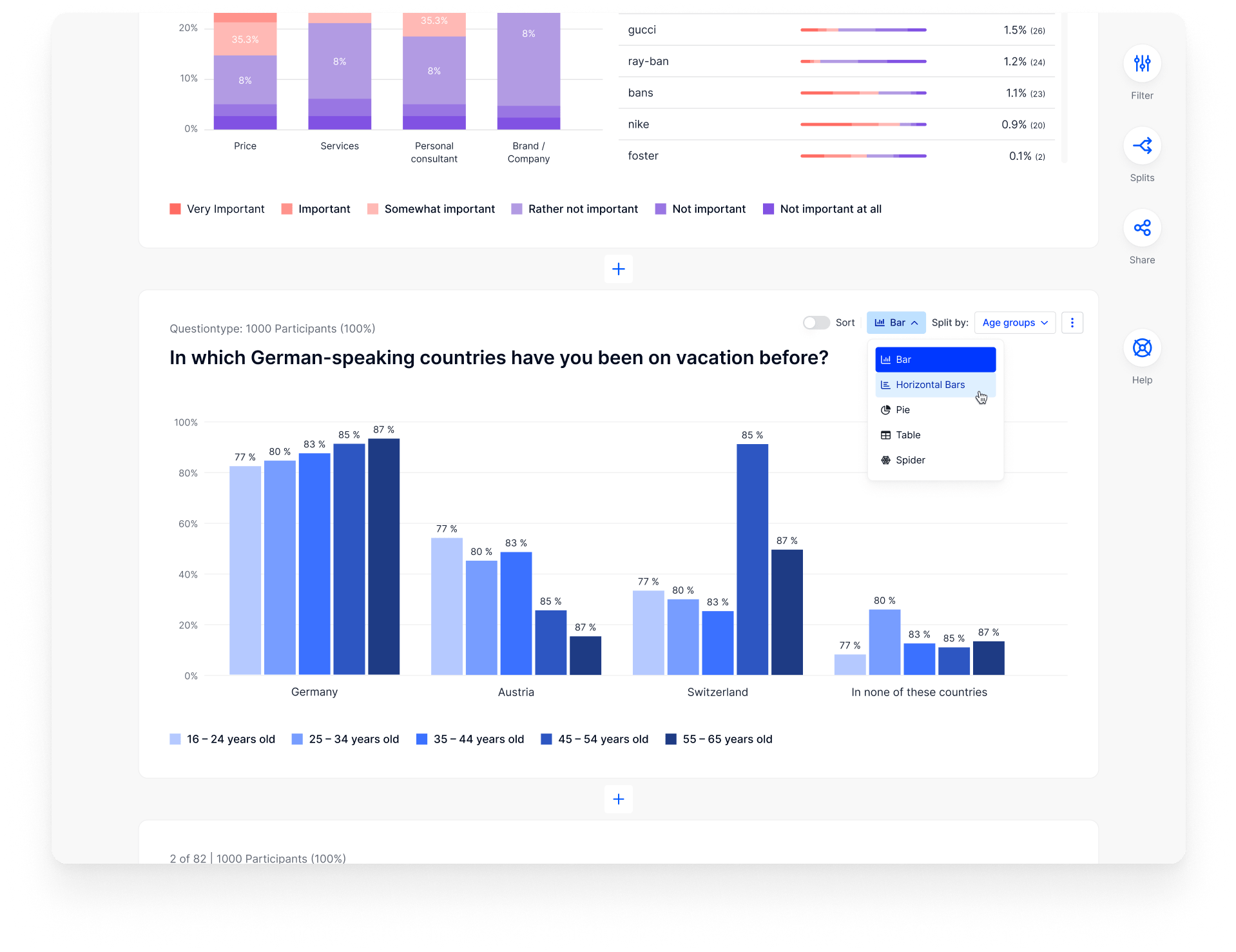
Get free access to the platform!
Join the loop 💌
Be the first to hear about new updates, product news, and data insights. We'll send it all straight to your inbox.
Get the latest market research news straight to your inbox! 💌
Wait, there's more

19.09.2024 | 9min read
Track Your Customer Retention & Brand Metrics for Post-Holiday Success

16.09.2024 | 10min read
Creative Checkup – Optimize Advertising Slogans & Creatives for ROI

03.09.2024 | 10min read
Get your brand Holiday Ready: 4 Essential Steps to Smash your Q4

Yearly plans are up to 65% off for a limited Black Friday sale. ⏰
- Form Builder
- Survey Maker
- AI Form Generator
- AI Survey Tool
- AI Quiz Maker
- Store Builder
- WordPress Plugin
HubSpot CRM
Google Sheets
Google Analytics
Microsoft Excel
- Popular Forms
- Job Application Form Template
- Rental Application Form Template
- Hotel Accommodation Form Template
- Online Registration Form Template
- Employment Application Form Template
- Application Forms
- Booking Forms
- Consent Forms
- Contact Forms
- Donation Forms
- Customer Satisfaction Surveys
- Employee Satisfaction Surveys
- Evaluation Surveys
- Feedback Surveys
- Market Research Surveys
- Personality Quiz Template
- Geography Quiz Template
- Math Quiz Template
- Science Quiz Template
- Vocabulary Quiz Template
Try without registration Quick Start
Read engaging stories, how-to guides, learn about forms.app features.
Inspirational ready-to-use templates for getting started fast and powerful.
Spot-on guides on how to use forms.app and make the most out of it.
See the technical measures we take and learn how we keep your data safe and secure.
- Integrations
- Help Center
- Sign In Sign Up Free
- What is experimental research: Definition, types & examples
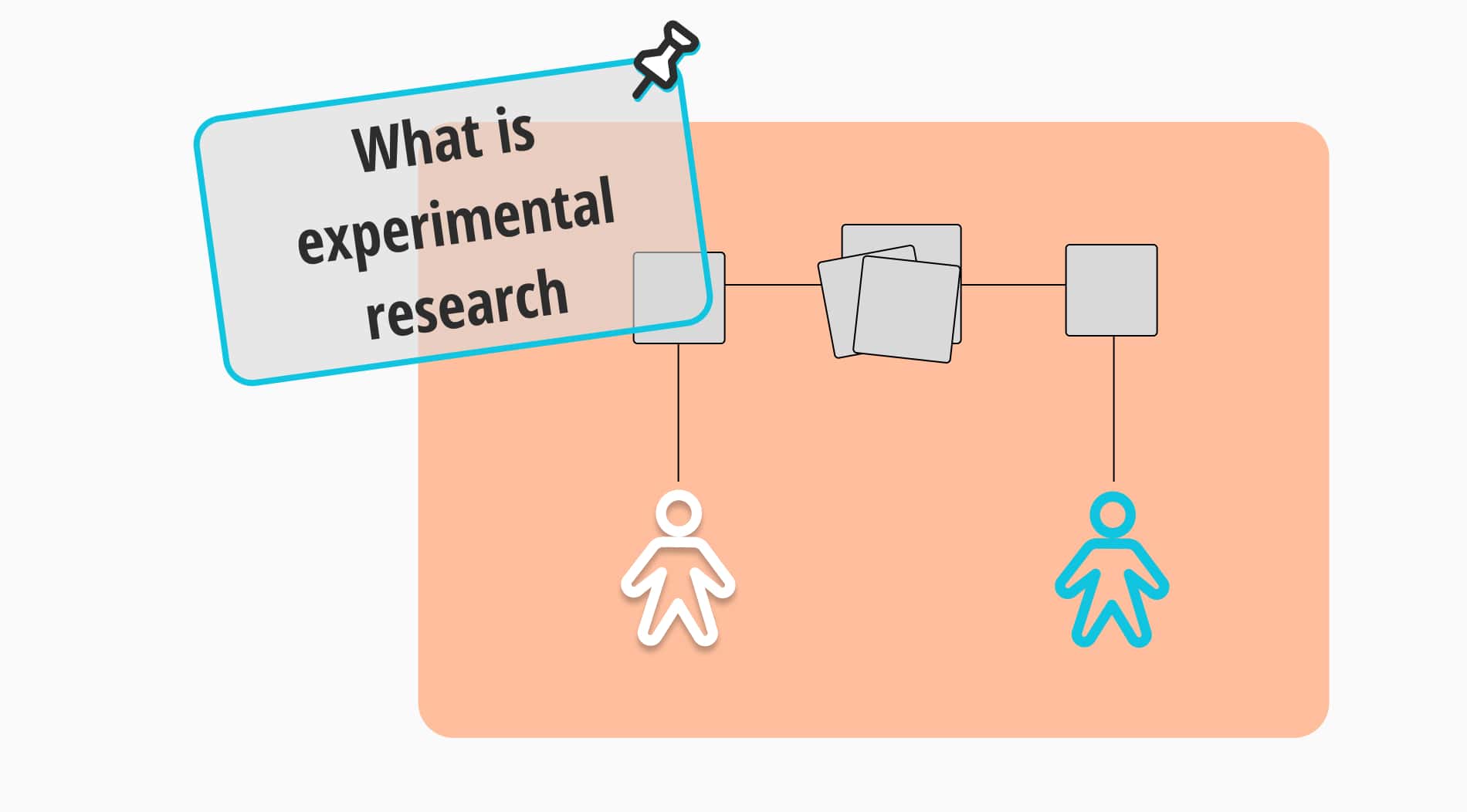
Defne Çobanoğlu
Life and its secrets can only be proven right or wrong with experimentation. You can speculate and theorize all you wish, but as William Blake once said, “ The true method of knowledge is experiment. ”
It may be a long process and time-consuming, but it is rewarding like no other. And there are multiple ways and methods of experimentation that can help shed light on matters. In this article, we explained the definition, types of experimental research, and some experimental research examples . Let us get started with the definition!
- What is experimental research?
Experimental research is the process of carrying out a study conducted with a scientific approach using two or more variables. In other words, it is when you gather two or more variables and compare and test them in controlled environments.
With experimental research, researchers can also collect detailed information about the participants by doing pre-tests and post-tests to learn even more information about the process. With the result of this type of study, the researcher can make conscious decisions.
The more control the researcher has over the internal and extraneous variables, the better it is for the results. There may be different circumstances when a balanced experiment is not possible to conduct. That is why are are different research designs to accommodate the needs of researchers.
- 3 Types of experimental research designs
There is more than one dividing point in experimental research designs that differentiates them from one another. These differences are about whether or not there are pre-tests or post-tests done and how the participants are divided into groups. These differences decide which experimental research design is used.
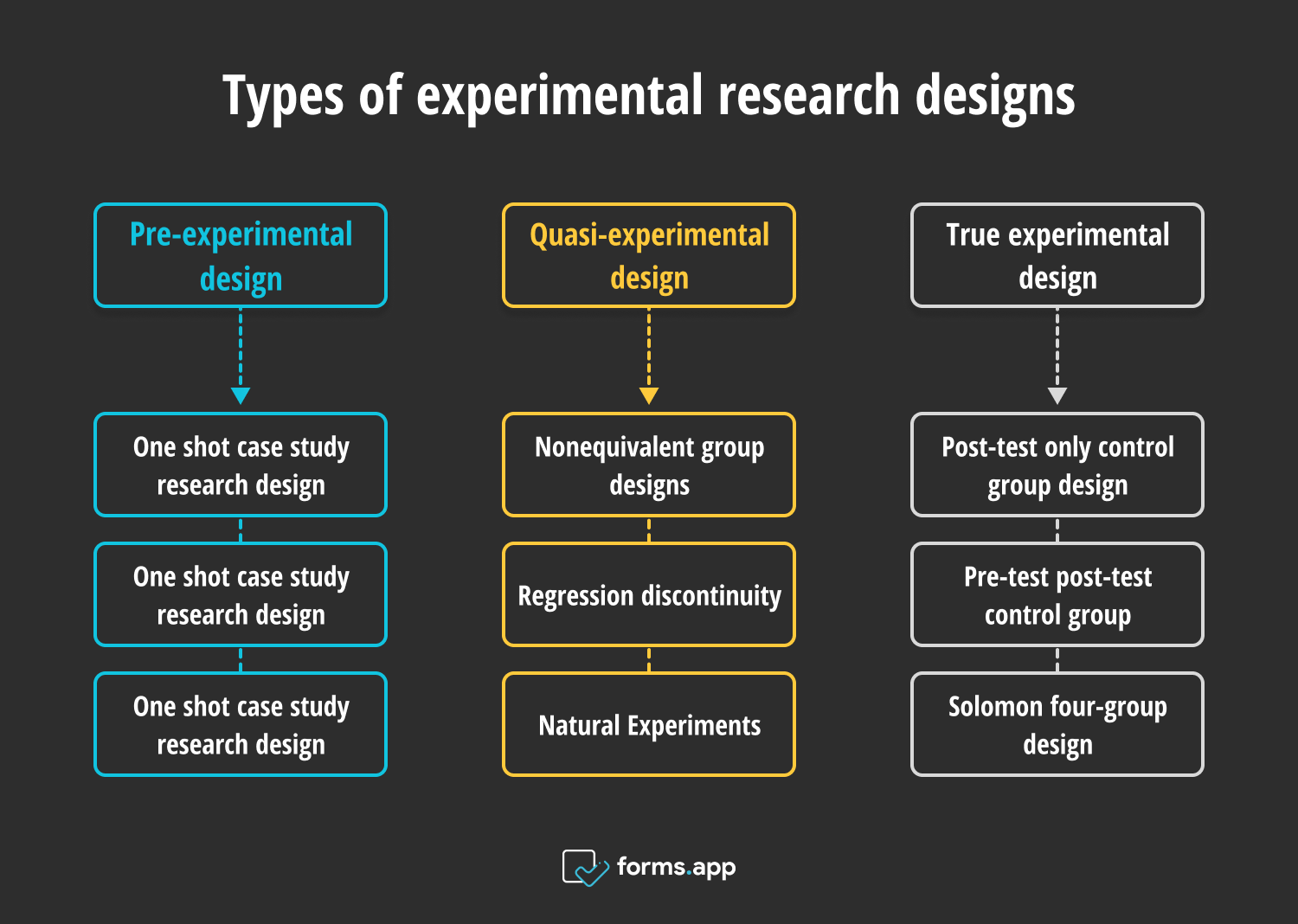
Types of experimental research designs
1 - Pre-experimental design
This is the most basic method of experimental study. The researcher doing pre-experimental research evaluates a group of dependent variables after changing the independent variables . The results of this scientific method are not satisfactory, and future studies are planned accordingly. The pre-experimental research can be divided into three types:
A. One shot case study research design
Only one variable is considered in this one-shot case study design. This research method is conducted in the post-test part of a study, and the aim is to observe the changes in the effect of the independent variable.
B. One group pre-test post-test research design
In this type of research, a single group is given a pre-test before a study is conducted and a post-test after the study is conducted. The aim of this one-group pre-test post-test research design is to combine and compare the data collected during these tests.
C. Static-group comparison
In a static group comparison, 2 or more groups are included in a study where only a group of participants is subjected to a new treatment and the other group of participants is held static. After the study is done, both groups do a post-test evaluation, and the changes are seen as results.
2 - Quasi-experimental design
This research type is quite similar to the experimental design; however, it changes in a few aspects. Quasi-experimental research is done when experimentation is needed for accurate data, but it is not possible to do one because of some limitations. Because you can not deliberately deprive someone of medical treatment or give someone harm, some experiments are ethically impossible. In this experimentation method, the researcher can only manipulate some variables. There are three types of quasi-experimental design:
A. Nonequivalent group designs
A nonequivalent group design is used when participants can not be divided equally and randomly for ethical reasons. Because of this, different variables will be more than one, unlike true experimental research.
B. Regression discontinuity
In this type of research design, the researcher does not divide a group into two to make a study, instead, they make use of a natural threshold or pre-existing dividing point. Only participants below or above the threshold get the treatment, and as the divide is minimal, the difference would be minimal as well.
C. Natural Experiments
In natural experiments, random or irregular assignment of patients makes up control and study groups. And they exist in natural scenarios. Because of this reason, they do not qualify as true experiments as they are based on observation.
3 - True experimental design
In true experimental research, the variables, groups, and settings should be identical to the textbook definition. Grouping of the participant are divided randomly, and controlled variables are chosen carefully. Every aspect of a true experiment should be carefully designed and acted out. And only the results of a true experiment can really be fully accurate . A true experimental design can be divided into 3 parts:
A. Post-test only control group design
In this experimental design, the participants are divided into two groups randomly. They are called experimental and control groups. Only the experimental group gets the treatment, while the other one does not. After the experiment and observation, both groups are given a post-test, and a conclusion is drawn from the results.
B. Pre-test post-test control group
In this method, the participants are divided into two groups once again. Also, only the experimental group gets the treatment. And this time, they are given both pre-tests and post-tests with multiple research methods. Thanks to these multiple tests, the researchers can make sure the changes in the experimental group are directly related to the treatment.
C. Solomon four-group design
This is the most comprehensive method of experimentation. The participants are randomly divided into 4 groups. These four groups include all possible permutations by including both control and non-control groups and post-test or pre-test and post-test control groups. This method enhances the quality of the data.
- Advantages and disadvantages of experimental research
Just as with any other study, experimental research also has its positive and negative sides. It is up to the researchers to be mindful of these facts before starting their studies. Let us see some advantages and disadvantages of experimental research:
Advantages of experimental research:
- All the variables are in the researchers’ control, and that means the researcher can influence the experiment according to the research question’s requirements.
- As you can easily control the variables in the experiment, you can specify the results as much as possible.
- The results of the study identify a cause-and-effect relation .
- The results can be as specific as the researcher wants.
- The result of an experimental design opens the doors for future related studies.
Disadvantages of experimental research:
- Completing an experiment may take years and even decades, so the results will not be as immediate as some of the other research types.
- As it involves many steps, participants, and researchers, it may be too expensive for some groups.
- The possibility of researchers making mistakes and having a bias is high. It is important to stay impartial
- Human behavior and responses can be difficult to measure unless it is specifically experimental research in psychology.
- Examples of experimental research
When one does experimental research, that experiment can be about anything. As the variables and environments can be controlled by the researcher, it is possible to have experiments about pretty much any subject. It is especially crucial that it gives critical insight into the cause-and-effect relationships of various elements. Now let us see some important examples of experimental research:
An example of experimental research in science:
When scientists make new medicines or come up with a new type of treatment, they have to test those thoroughly to make sure the results will be unanimous and effective for every individual. In order to make sure of this, they can test the medicine on different people or creatures in different dosages and in different frequencies. They can double-check all the results and have crystal clear results.
An example of experimental research in marketing:
The ideal goal of a marketing product, advertisement, or campaign is to attract attention and create positive emotions in the target audience. Marketers can focus on different elements in different campaigns, change the packaging/outline, and have a different approach. Only then can they be sure about the effectiveness of their approaches. Some methods they can work with are A/B testing, online surveys , or focus groups .
- Frequently asked questions about experimental research
Is experimental research qualitative or quantitative?
Experimental research can be both qualitative and quantitative according to the nature of the study. Experimental research is quantitative when it provides numerical and provable data. The experiment is qualitative when it provides researchers with participants' experiences, attitudes, or the context in which the experiment is conducted.
What is the difference between quasi-experimental research and experimental research?
In true experimental research, the participants are divided into groups randomly and evenly so as to have an equal distinction. However, in quasi-experimental research, the participants can not be divided equally for ethical or practical reasons. They are chosen non-randomly or by using a pre-existing threshold.
- Wrapping it up
The experimentation process can be long and time-consuming but highly rewarding as it provides valuable as well as both qualitative and quantitative data. It is a valuable part of research methods and gives insight into the subjects to let people make conscious decisions.
In this article, we have gathered experimental research definition, experimental research types, examples, and pros & cons to work as a guide for your next study. You can also make a successful experiment using pre-test and post-test methods and analyze the findings. For further information on different research types and for all your research information, do not forget to visit our other articles!
Defne is a content writer at forms.app. She is also a translator specializing in literary translation. Defne loves reading, writing, and translating professionally and as a hobby. Her expertise lies in survey research, research methodologies, content writing, and translation.
- Form Features
- Data Collection
Table of Contents
Related posts.
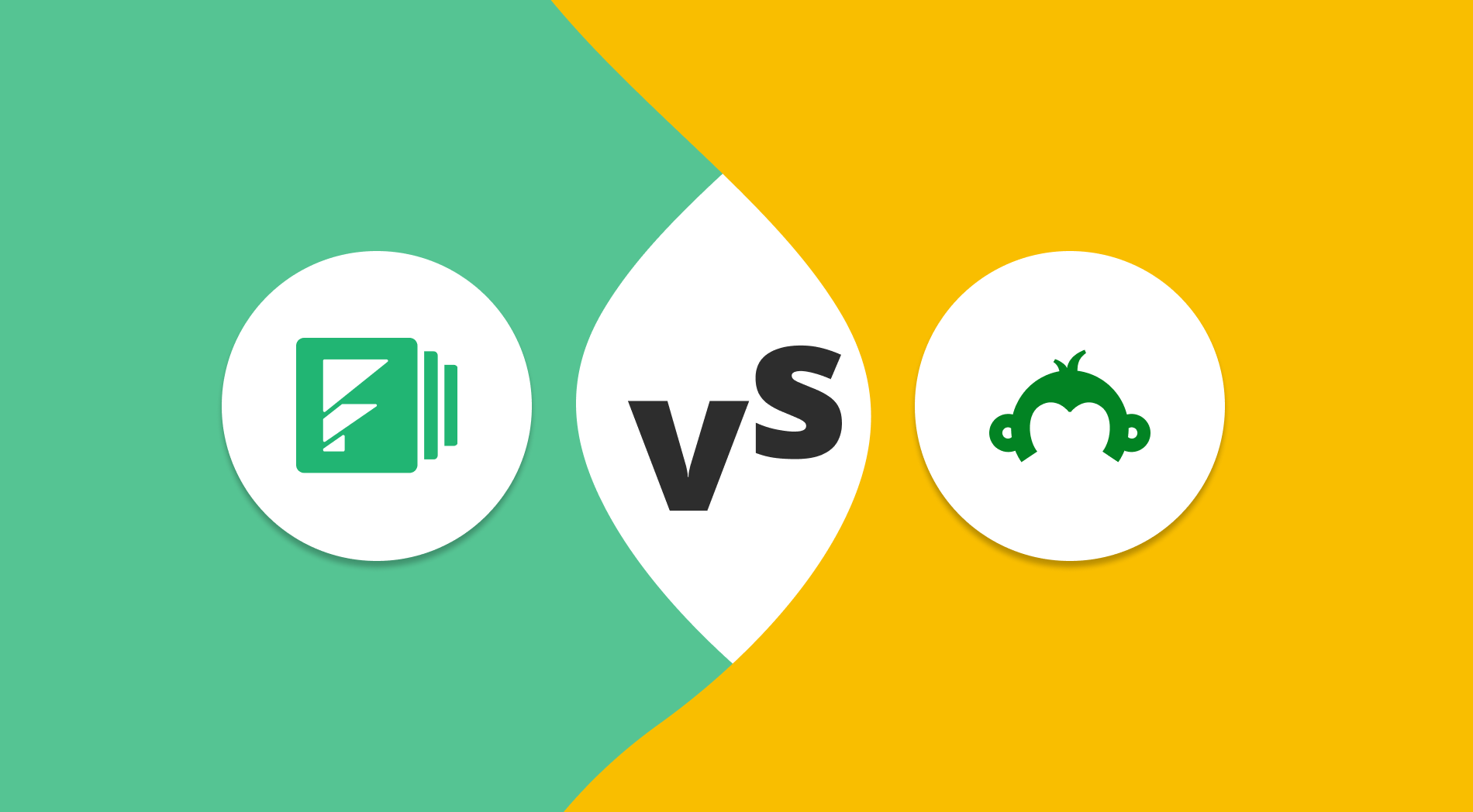
Formstack vs SurveyMonkey: Which one to choose
Yulia Guseva
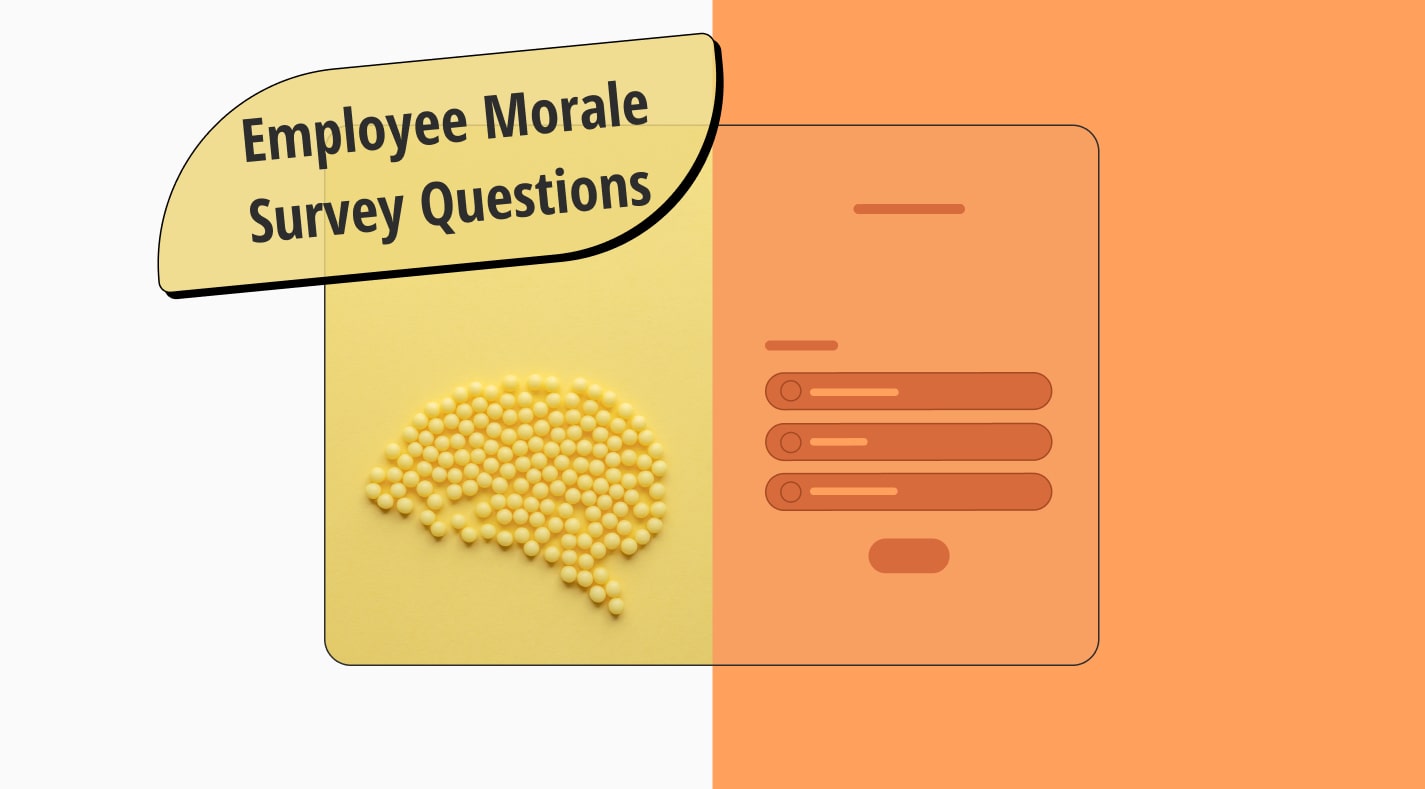
20+ employee morale survey questions to ask in a questionnaire

How to use video throughout your sales process to close more deals
Cristian Stanciu
Marketing91
What is Experimental Research? Definition, Design Types & Examples
September 18, 2023 | By Hitesh Bhasin | Filed Under: Marketing
Whether it’s running lab tests, conducting field studies, or creating simulations, experimental research is all about diving deep into unexplored territories. It’s about asking daring questions and seeking answers that push the boundaries of our knowledge. At its core, experimental research is about testing hypotheses with controlled experiments. By carefully creating conditions and collecting data, researchers can learn more about how the world works, and make sure their theories hold up.
Some of the common experimental research examples to help you understand the concept are:
- Medicinal researchers use experimental research to determine the best course of treatment for illnesses . Usually, instead of directly testing it on human subjects, they take samples of bacteria from a patient and then try the anti-bacterial medicine developed.
- Social scientists are well-versed in experimental research related to human behavior. To illustrate this, consider a study where two people are randomly chosen, and one of them is isolated from other humans for an entire year. Such scientific experiments in physical sciences allow us to gain insights into different aspects of human behavior.
- Ensuring an exceptional user experience is paramount during product development. This can be achieved by putting the product through a rigorous testing phase, where potential users are invited to give feedback and suggest improvements. Once this process is complete, the product’s final design can be released.
Table of Contents
What is Experimental Research?

Experimental research is a scientific study used to analyze and compare two sets of variables – the control group and the experimental group. For example, quantitative research techniques are classified as experimental, where the control variable is kept constant to measure changes in the experiment variable.
Experimental research refers to observing and collecting data in a controlled environment, offering potential benefits for professional use. Experimental research is a type in which researchers often test how changes to independent variables impact dependent variables. This is done by changing the value of certain independent variables and measuring the effects on corresponding dependent variables.
Key Takeaways!
- Experimental research provides a clear direction for hypothesis testing and data analysis .
- It allows for precise control over variables, resulting in highly accurate outcomes.
- Experimental research can be replicated, allowing for validation and improvement of initial findings.
Understanding Experimental Research Design
Experimental research is a great way to compare two or more variables and observe the effects on a particular group or groups under specific conditions. It helps in understanding cause-and-effect relationships of different variables like price as an independent variable affects sales which is a dependent variable. Let’s understand this with the examples of some of the independent and dependent variables –
1) Independent Variables
- Inventory (new products or upgrades)
- Sales agents’ approaches and interactions
- Digital user experience (DX
- Marketing activities
- Season, etc
2) Dependent variables
- In-store visits
- VoC feedback
- Time spent on a website
- Bounce rates
- Site traffic, etc
Importance of Experimental Design
When you conduct experimental research, it plays an important role in understanding the cause-and-effect relationships in a system. By altering particular variables and observing their effect, we can identify how different components of the system interact with one another, which is especially useful when looking into intricate matters.
It is a key component of academics & science. It’s used to test ideas , create new products, and make vital breakthroughs in different fields. Its significance goes beyond that as it’s an essential method for many scientific and academic studies. For instance, knowing the effects of a drug is integral to its development. Researching the dosage and associated side effects is an important part of this process. This enables researchers to create new drugs and treatments that are safe and effective.
Experimental research is also used in psychology to understand how the brain works and identify new treatments for mental health issues. It involves manipulating variables such as stimuli to gain insights into human behavior. It is also used in education to test new teaching methods and find the most effective ones.
Trying out something new via experimental design can be advantageous for businesses . Through experimentation, they can assess the effect of different marketing strategies , product design , and customer service on their success as well as identify potential opportunities. With this change, businesses can see if it is financially beneficial for them, as well as track how other businesses in the same industry react and if those reactions lead to an increase in sales.
When Can a Researcher Conduct Experimental Research?
Experimental research can be conducted in any environment where there is the potential for a cause and an effect. This may include the study of language, social situations, medicine, engineering, or marketing to name a few.
If it is possible to manipulate one variable while keeping the other variables constant then experimental research can be used as an effective tool for understanding how different elements interact
In order to conduct effective experimental research, a scientist must use the scientific method. This approach involves forming a hypothesis, designing an experiment, collecting data, analyzing the results and drawing conclusions based on the findings. Each step of this process requires careful consideration and planning in order for it to be successful .
You can use experimental research methods in different situations like –
- When the cause and effect are dependent on time
- When cause and effect have an invariable relationship
- When the researcher wants to understand the importance of the cause-and-effect relationship
Types of Experimental Research Design
1. pre-experimental research design.
It uses observation to observe the effects of an experiment. Pre-experimental research generally takes place in different design structures
- One-shot case study research design – Single-group pre-experimental research involves testing one group exposed to a stimulus, then analyzing the performance of individuals or entities in the group after application.
- One-group pretest-posttest design – Researchers use pre-and-post-tests to measure the effects of stimuli on test subjects. The results allow for observations about the impact of the stimulus.
- Static group comparison design – In a static group comparison, researchers assess two different groups, with only one receiving the stimuli being studied. Testing is conducted at the end of a process to compare results between groups given and not given stimuli.
2. True experimental research design
For these types of research, participants must be allocated to different groups randomly. This is known as random assignment and is a key element of the research process .
By removing bias in creating study groups, the results of the research are more reliable. Some of the design structures used in this true experimental research are-
- Posttest-only control group design – The randomized control trial design randomly divides participants into two groups, one which acts as a control and does not receive the stimuli being tested, and another which does receive the stimuli. At the conclusion of the experiment, researchers carry out tests to evaluate the tangible results arising from exposure to particular stimuli.
- Pretest-posttest control group design – It involves testing the participants before & after the stimulus from the non-control group. It utilizes a double-test model which allows researchers to compare and assess results in multiple ways.
- Solomon’s four-group design – The Solomon four-group design is a widely used experimental research structure that involves assigning participants to four randomized groups. This method is thought to be one of the most detailed and complex schemes for running experiments. Groups are formed for pre and post-tests, both with and without control groups, for research purposes.
3. Quasi-experimental research design
Quasi-experimental research is similar to true experimental research but differs in how research subjects are assigned to groups as it lacks randomization.
Instead of randomly assigned participants, they are utilized when randomization is not practical or feasible. Quasi-experimental studies are often conducted in educational settings, helping researchers to generate useful insights into the field.
How to Conduct Experimental Research
Some of the steps of conducting experimental research designs effectively are:
- Your experimental research begins with forming a question, choosing a topic, and identifying related variables.
- Then it should include both secondary sources and surveys.
- You need to collect facts and data to use when beginning a research project to help achieve more successful results.
- Once you are done with researching and examining data related to the topic, come up with a hypothesis that can be tested.
- Next, you need to identify which variables are independent and dependent. After that, choose a range for the independent variable(s) and manipulate these according to your desired outcome. You need to measure the dependent variable(s) at the time when you study the independent variable(s).
- When conducting experiments on certain topics, make sure to have a sufficient sample size and ensure that the subjects are assigned to their respective treatment groups randomly. This fairly distributes the different levels of “treatment” among them.
- Control groups are necessary for identifying how a subject would act without external influences. They provide a baseline to compare results against. This allows you to accurately compare the results with the test subjects that did receive manipulation.
- When assigning subjects for a study, you must choose between two types of groups: a completely randomized design or a randomized block design. Additionally, you can opt for either an independent measures design or a repeated measures design.
- Repetitive experimentation is essential as you need to keep trying different variable settings and monitoring the results. Additionally, make sure to document your observations by taking measurements and making notes.
- After running through the experiment(s), you can make a logical conclusion. However, it is essential to keep testing your hypothesis over time to ensure accuracy and validity.
What Data Collection Methods You can use?
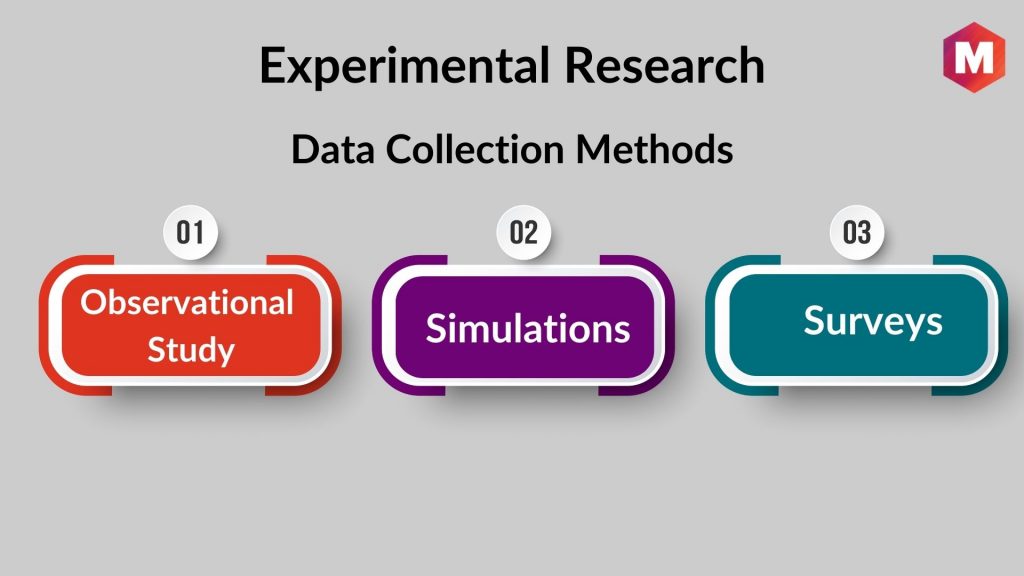
While creating experimental groups for your experimental research, you can use following data collection methods:
1. Observational Study
In an observational study, a researcher records information as it naturally occurs without any intervention.
2. Simulations
Simulations involve creating a hypothetical situation to gain insight into how people or things may react in a real-world setting.
Finally, surveys rely on asking participants questions in order to obtain data.
Some of the upsides of experimental research design are –
- You can freely experiment with variables without affecting the validity of their research, plus it further offers the ability to regulate variables and enhance objectivity.
- You will be able to replicate its studies in order to examine different factors or verify their results again. This allows them to repeat experiments and gain further insight into the topic at hand.
- It can aid researchers in their understanding of different environments, providing a comprehensive overview, plus it can be deployed in a variety of industries and can help businesses gain various benefits.
- Research results can be applied to other situations and contexts, plus they can be used to validate or disprove hypotheses.
- The findings are precise and clear-cut.
- It enables the identification of correlations between different variables and their subsequent effects on one another.
- It can help researchers gain deeper insights into the relationships between different variables and understand their implications.
Disadvantages
A few downsides of an experimental research method are –
- Carrying out an activity like this requires substantial resources, time & cost, hence making it a difficult venture.
- You can create simulation models of real-world scenarios by manipulating variables, although this could lead to unintended consequences if it is not done with care.
- It is not infallible; there may be issues in the methods used and other errors that can’t be anticipated.
- Mistakes in experimental research design should be avoided to guarantee accurate results, and that may require re-running the experiment.
- Certain factors in research cannot be manipulated and some experiments may not be feasible to perform.
Experimental Research Examples
1) social media advertising on brand awareness.
This experiment will compare the effectiveness of social media campaigns on awareness with and without advertising .
The aim is to compare brand awareness between two campaigns, which could be done using surveys, interviews, or other quantitative methods. This hypothesis speculates that a campaign with creative content will lead to heightened brand recognition .
2) A/B Testing
A/B testing is a technique used to compare two versions of a campaign; it can be used to test whether more creative content will have a greater impact on brand awareness .
Two versions of an ad campaign were created: a creative version and a less creative version. The effectiveness of each was assessed to determine which one generated more brand awareness.
Conclusion!
By using experimental research techniques , scientists are able to test theories and identify the root cause of an issue. Furthermore, experimental studies provide more reliable results compared to observational ones. Additionally, quantitative data collected from experiments can be processed & analyzed more accurately than qualitative data.
Applied to cause and effect studies, this type of research method is incredibly valuable. It enables researchers to modify certain variables and track their impact on a predetermined dependent variable, thus giving them deep insights into the relationship between the two.
Despite the positive effects it can have, experimental research also comes with certain drawbacks. Namely, researchers can be biased in their data collection, it’s often difficult to replicate results, and a large number of sample sizes are required for output accuracy.
1) What is experimental research and example?
Experimental research is a method of scientific investigation in which an investigator manipulates certain variables and measures their effect on other variables. For example, a researcher studying the effects of caffeine on concentration might administer coffee to one group of subjects and a placebo to another, then measure their relative concentration levels.
2) What are characteristics of an experiment in research?
Key characteristics of experimental research include control over variables, the ability to manipulate variables to measure their effects, random assignment of subjects to treatments, and the use of control groups.
3) What are the two basic types of experimental research?
The two basic types of experimental research are true experiments and quasi-experiments. True experiments involve random assignment of subjects to different conditions, while quasi-experiments do not.
4) What is the format of experimental research?
The standard format of experimental research includes an introduction (with hypothesis), methodology (including the description of participants, materials, and procedures), results section (presenting the findings), and a conclusion (discussing the results and their implications).
Liked this post? Check out the complete series on Market research
Related posts:
- What is Research Design? Type of Research Designs
- The 11 Important Steps in Research Design
- Brand Design – Definition, Importance, Examples and Process
- How to Write Research Proposal? Research Proposal Format
- 7 Key Differences between Research Method and Research Methodology
- Qualitative Research: Meaning, and Features of Qualitative Research
- Research Ethics – Importance and Principles of Ethics in Research
- Channel Design – Definition, Importance, Elements and Types
- Sampling and Sample Design – Types and Steps Involved
- What is Product Design? Definition, History & How to Become a Product Designer
About Hitesh Bhasin
Hitesh Bhasin is the CEO of Marketing91 and has over a decade of experience in the marketing field. He is an accomplished author of thousands of insightful articles, including in-depth analyses of brands and companies. Holding an MBA in Marketing, Hitesh manages several offline ventures, where he applies all the concepts of Marketing that he writes about.
All Knowledge Banks (Hub Pages)
- Marketing Hub
- Management Hub
- Marketing Strategy
- Advertising Hub
- Branding Hub
- Market Research
- Small Business Marketing
- Sales and Selling
- Marketing Careers
- Internet Marketing
- Business Model of Brands
- Marketing Mix of Brands
- Brand Competitors
- Strategy of Brands
- SWOT of Brands
- Customer Management
- Top 10 Lists
Very thoughtful analysis of the potential benefits that come with including an appropriate ratio of experimental research. Thanks for sharing.
Leave a Reply Cancel reply
Your email address will not be published. Required fields are marked *
- About Marketing91
- Marketing91 Team
- Privacy Policy
- Cookie Policy
- Terms of Use
- Editorial Policy
WE WRITE ON
- Digital Marketing
- Human Resources
- Operations Management
- Marketing News
- Marketing mix's
- Competitors
- Tools and Resources
- Customer Services
- Business Education
- Business Law
- Business Policy and Strategy
- Entrepreneurship
- Human Resource Management
- Information Systems
- International Business
- Negotiations and Bargaining
- Operations Management
- Organization Theory
- Organizational Behavior
- Problem Solving and Creativity
- Research Methods
- Social Issues
- Technology and Innovation Management
- Share Facebook LinkedIn Twitter
Article contents
Experimental designs in business research.
- Heiko Breitsohl Heiko Breitsohl Department for Personnel, Management, and Organization, University of Klagenfurt
- https://doi.org/10.1093/acrefore/9780190224851.013.210
- Published online: 26 April 2021
Conducting credible and trustworthy research to inform managerial decisions is arguably the primary goal of business and management research. Research design, particularly the various types of experimental designs available, are important building blocks for advancing toward this goal. Key criteria for evaluating research studies are internal validity (the ability to demonstrate causality), statistical conclusion validity (drawing correct conclusions from data), construct validity (the extent to which a study captures the phenomenon of interest), and external validity (the generalizability of results to other contexts). Perhaps most important, internal validity depends on the research design’s ability to establish that the hypothesized cause and outcome are correlated, that variation in them occurs in the correct temporal order, and that alternative explanations of that relationship can be ruled out.
Research designs vary greatly, especially in their internal validity. Generally, experiments offer the strongest causal inference, because the causal variables of interest are manipulated by the researchers, and because random assignment makes subjects comparable, such that the sources of variation in the variables of interest can be well identified. Natural experiments can exhibit similar internal validity to the extent that researchers are able to exploit exogenous events creating (quasi-)randomized interventions. When randomization is not available, quasi-experiments aim at approximating experiments by making subjects as comparable as possible based on the best available information. Finally, non-experiments, which are often the only option in business and management research, can still offer useful insights, particularly when changes in the variables of interest can be modeled by adopting longitudinal designs.
- research design
- natural experiment
- quasi-experiment
- non-experiment
- causal inference
You do not currently have access to this article
Please login to access the full content.
Access to the full content requires a subscription
Printed from Oxford Research Encyclopedias, Business and Management. Under the terms of the licence agreement, an individual user may print out a single article for personal use (for details see Privacy Policy and Legal Notice).
date: 31 October 2024
- Cookie Policy
- Privacy Policy
- Legal Notice
- Accessibility
- [66.249.64.20|81.177.182.136]
- 81.177.182.136
Character limit 500 /500

IMAGES
VIDEO
COMMENTS
Experimental research is a kind of study that rigidly follows a scientific research design. It involves testing or attempting to prove a hypothesis by way of experimentation. As such, it uses one or more independent variables, …
What is Experimental Research? Experimental research is a study conducted with a scientific approach using two sets of variables. The first set acts as a constant, which you use to measure the differences of the second set. …
Experimental research is a systematic approach to scientific inquiry that aims to investigate cause-and-effect relationships by manipulating independent variables and observing their effects on dependent variables. …
Experimental research is the process of carrying out a study conducted with a scientific approach using two or more variables. In other words, it is when you gather two or more variables and compare and test them in …
At its core, experimental research is about testing hypotheses with controlled experiments. By carefully creating conditions and collecting data, researchers can learn more about how the world works, and make sure …
Conducting credible and trustworthy research to inform managerial decisions is arguably the primary goal of business and management research. Research design, particularly the various …